VIEWBOOK


ARCHITECTURE
USC SCHOOL OF
Produced by University of Southern California, 2022
Assistant Dean for Communication and Marketing: Keiko McNally Assistant Dean of Student Services: Jennifer Park
All program information contained here is summarized from the USC Catalogue and is considered non-official. The official source for information on USC’s Academic Policies and Procedures is the USC Catalogue.
The USC Catalogue is the document of authority for all students. The program requirements listed in the USC Catalogue supersede any information which may be contained in any viewbook of any school or department. The university reserves the right to change its policies, rules, regulations, requirements for graduation, course offerings and any other contents of this catalogue at any time.
The University of Southern California admits students of any race, color, national origin, ancestry, religion, gender, sexual orientation, age, physical disability or mental disability to all the rights, privileges, programs, and activities generally accorded or made available to students at the school. It does not discriminate on the basis of race, color, national origin, ancestry, religion, gender, sexual orientation, age, physical disability or mental disability in the administration of its educational policies, admissions policies, scholarship and loan programs, and athletic and other school administered programs. The university’s full non-discrimination policy can be found on the Web at policies.usc.edu.
In compliance with Section 504 of the Federal Rehabilitation Act, the university provides reasonable accommodations for students with disabilities. The university’s Section 504 Coordinator is the USC Office of Equity and Diversity. For more information, contact the 504 Coordinator at oed@usc.edu or visit equity.usc.edu.
This publication is made possible with the generous support of the Blurock Family Endowment for Publication.
CONTENTS

USC ARCHITECTURE 6 MISSION + VISION 12 ABOUT USC ARCHITECTURE 16 LOS ANGELES 18 FACULTY 20 USC EXPERIENCE 22 GLOBAL STUDIES 26 AFTER GRADUATION 30 PROFESSIONAL DEVELOPMENT 32 RESOURCES & FACILITIES 34 PUBLIC LECTURES & EXHIBITIONS 42 DEGREE PROGRAMS 46 UNDERGRADUATE PROGRAMS STUDENT WORK ADMISSIONS 74 GRADUATE PROGRAMS STUDENT WORK ADMISSIONS 126 PRE-COLLEGE PROGRAMS
ARCHITECTURAL EDUCATION AND SYSTEMIC CHANGE

MISSION+VISION
6 VIEWBOOK
USC School of Architecture is emerging as a premier global design school, a 21st century global platform for instruction, research, and creative production on cultural heritage, cities, and landscapes; architecture and urbanism; buildings and technologies; and histories and theories about the built and designed environment at all scales. USC Architecture graduates are active citizens whose practices are often defined in relation to the world’s challenges, from planetary warming to social inequity, rapid urbanization to political polarization. Deeply rooted in the city of Los Angeles and also intensely connected to global concerns, USC architects and scholars work shoulder to shoulder with our surrounding communities to develop, empower, and leverage local insight to enable them to become intelligent and intrepid practitioners, and forge creative solutions.
USC Architecture is a school defined by courageous and bold approaches. Supported by inclusive thinking, USC Architecture educates its students to be risk-takers by taking an open and inclusive approach to the profession. We are a school that is commited to exposing students to the most pressing
7 USC ARCHITECTURE
global challenges and communities who are impacted by them. USC Architecture is future-focused but never dismissive of the past. We are a school that is connected, merging rigorous design education with new proficiencies in the humanities, policy, real estate and business. USC Architecture authentically unites a sense of confidence borne of a purposeful education and the boldness that has characterized Southern California’s architectural legacy.
At the USC School of Architecture, we see architects as citizens with a unique set of skills to enable the cocreation of new knowledge and action, amongst and between students, faculty, and communities. Collectively, we, too, are the guardians of the democratic space and civic imaginations that breathe life into the consciousness of persons of all identities.
To the greatest extent possible, we are collectively called upon to develop, curate, enact, and learn from the desperately needed structural changes in our society. The principles and values that motivate us as practitioners, designers, and scholars must be in alignment with how we organize our School, invest in our collective future, and
8 VIEWBOOK
innovate with purpose and intentionality. We must lead by example, utilizing the powerful tools of design and architecture to produce cities, buildings, and environments that benefit the public good, and contribute to an imaginative and creative civic and public infrastructure.
We are profession-focused and socially engaged. We continue to advance our School as a locus of innovative thought on theory and practice by meeting this moment in our history with new approaches to design in a world beset by problems ranging from global pandemics to structural racism. Utilizing the power of architecture and interdisciplinary theory, our faculty and students will explore the role of the architect in community development, reorganizing cities to be more equitable, harnessing the power of public space for increased innovation in ecology and placemaking, and understanding historical meaning in the context of contested histories. Using Los Angeles, Southern California, and strategic global locations, USC Architecture allows students to engage with on-the-ground conditions while simultaneously experimenting with theoretical ideas.
9 USC ARCHITECTURE
CAROLINE SKOGLUND
ARCH 202B
ARCHITECTURAL DESIGN || SPRING 2022
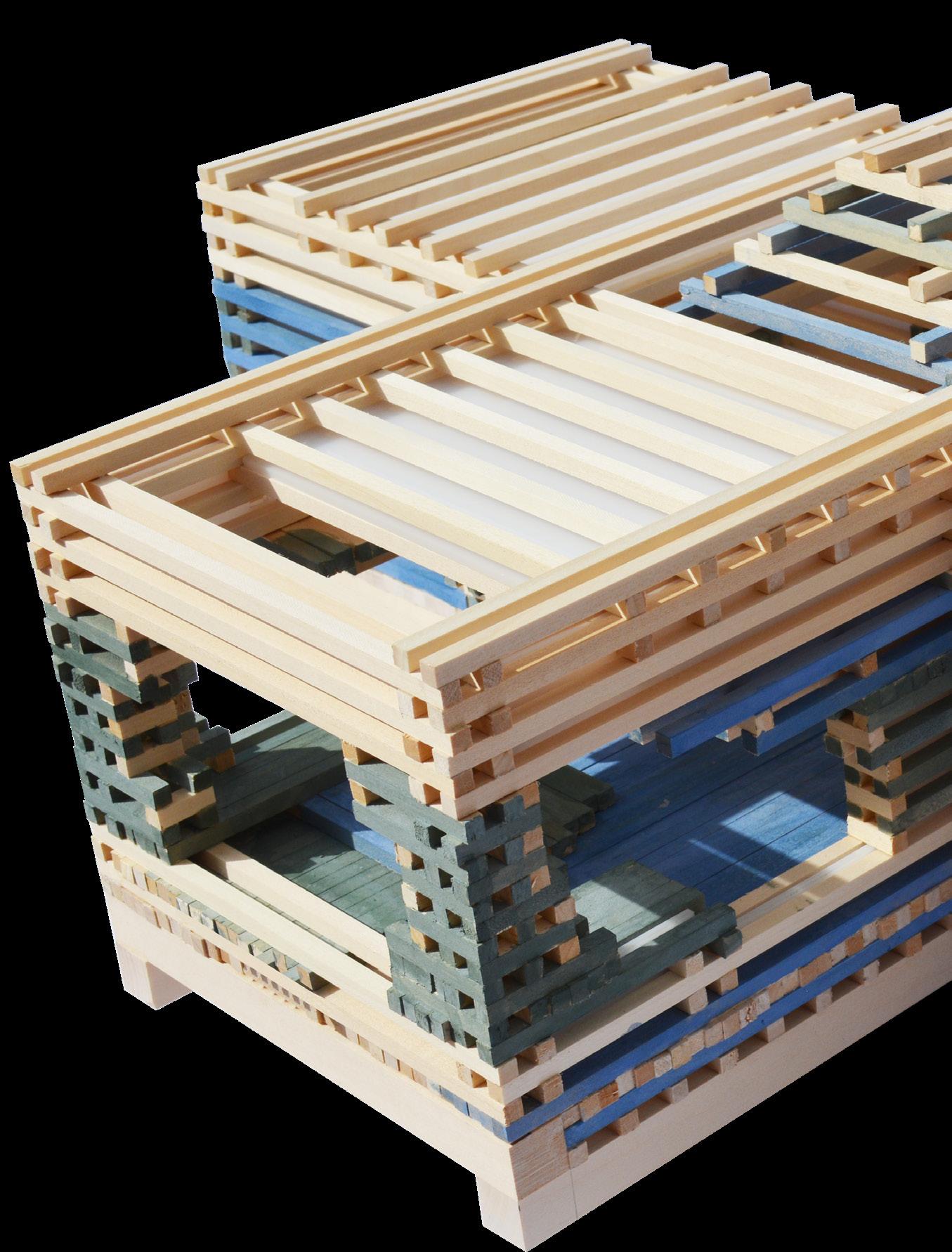
10 VIEWBOOK
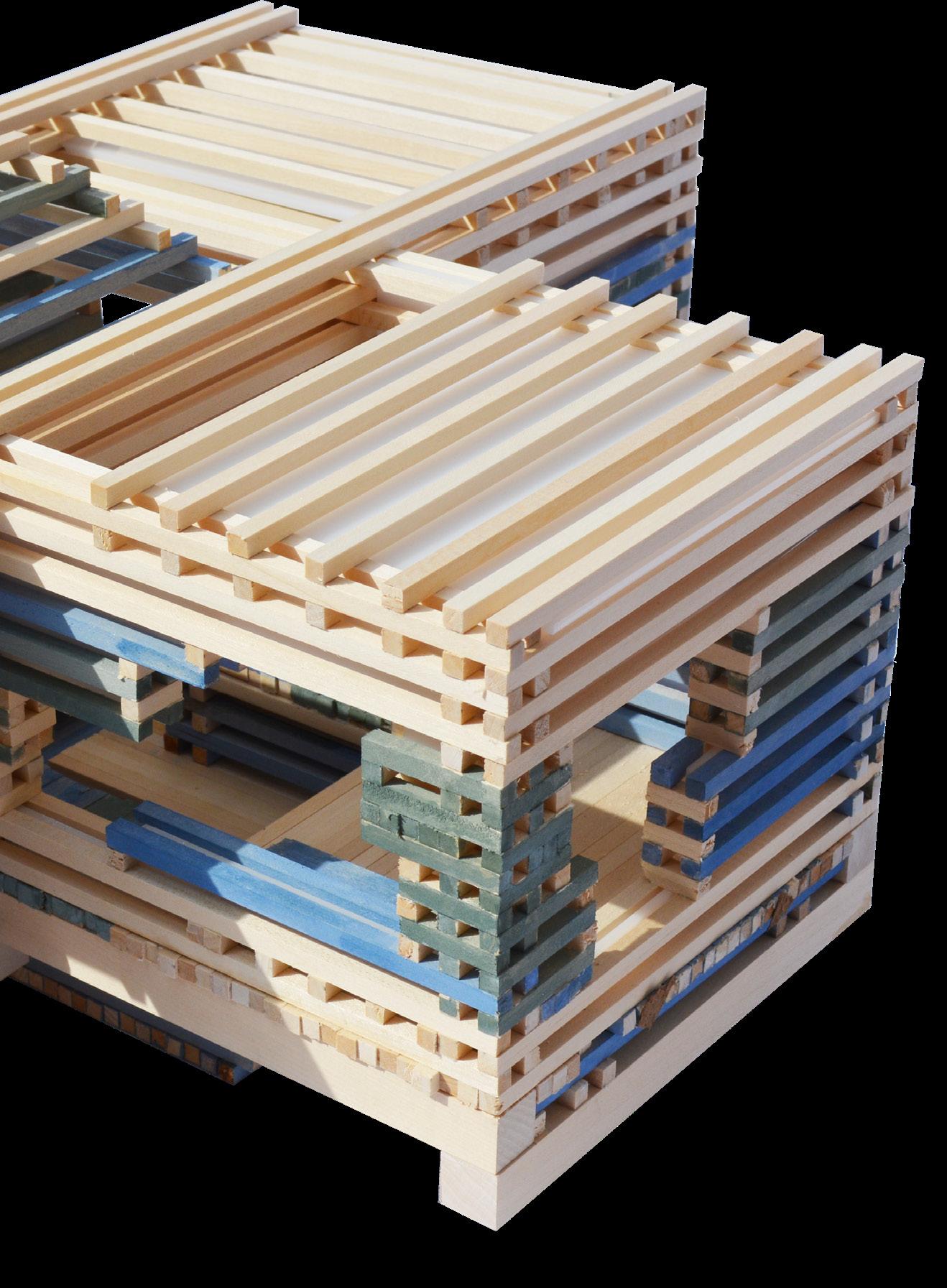
11 USC ARCHITECTURE
SINCE OUR ESTABLISHMENT IN 1919, THE USC SCHOOL OF ARCHITECTURE HAS EXCELLED IN OFFERING A SOLID FOUNDATION FOR ALL OF OUR GRADUATES.
It is a place where practitioners are created, and where the role of the architect, landscape architect, urban designer, theorist, historian, and technology and science specialist is redefined.
12 VIEWBOOK
ABOUT USC ARCHITECTURE
420
GRADUATE STUDENTS
58% Female
42% Male UNDERGRADUATE STUDENTS
60% Female 40% Male
23%
FIRST GENERATION STUDENTS
23% of Population
13 USC ARCHITECTURE
270
Drawing from the dynamic urban environment of Los Angeles, USC Architecture is committed to making a tangible difference in its community and throughout the world. Through a range of programming, and led by purpose-driven faculty and students, USC Architecture fosters a greater understanding of the complexity of our everevolving urban landscape. We embrace a multidisciplinary approach that encourages architecture students, scholars, and practitioners to find meaning in their roles as citizens, influencers and advocates across a range of architectural practices, now and into the future.
Beyond offering a preeminent architecture education, we’re committed to providing students with dedicated academic advising, wellness services and mentoring opportunities, especially for first-generation college students, ensuring they’re thriving in all aspects of their USC Architecture experience.
14 VIEWBOOK
7:1
7,000+
FACULTY STUDENT/ FACULTY RATIO ALUMNI
15 USC ARCHITECTURE 100
LOS ANGELES
THE UNIVERSITY OF SOUTHERN CALIFORNIA IS A PREMIER RESEARCH INSTITUTION EMBEDDED IN THE DYNAMIC AND EVER-EVOLVING CITY OF LOS ANGELES

This provides USC Architecture with an unparalleled context for the study of the natural, built and technological environments, as well as opportunities to engage with cultural institutions and events throughout the year.
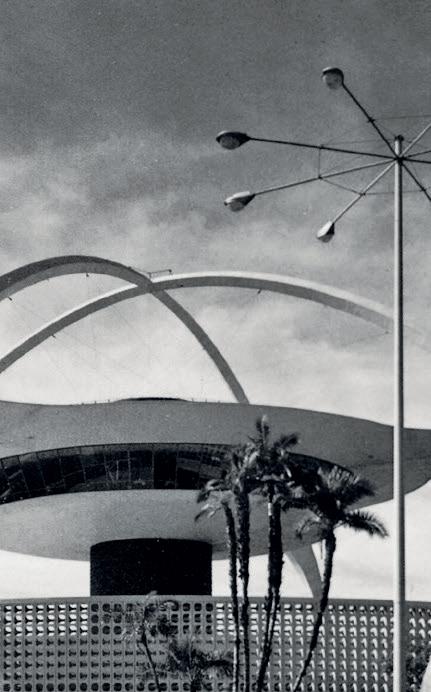
OUR APPROXIMATELY INSTRUCTING STUDENTS
100 FACULTY MEMBERS ARE IN STUDIOS AND DIVERSE EXPERTS SEMINARS EACH TERM.
Tenured academicians teach alongside practicing award-winning professionals. Invited visiting faculty and critics are selected from elite schools and design practices from around the world.

FACULTY 18 VIEWBOOK
RECENT VISITING FACULTY/CRITICS:
Wendell Burnette
Manuel DeLanda
Paffard Keatinge-Clay
Ralph Knowles
Tom Kundig
Mia Lehrer
David Martin
Thom Mayne

Thomas Phifer
Julie Snow
Trey Trahan
Ma Yansong
19 USC ARCHITECTURE
USC EXPERIENCE
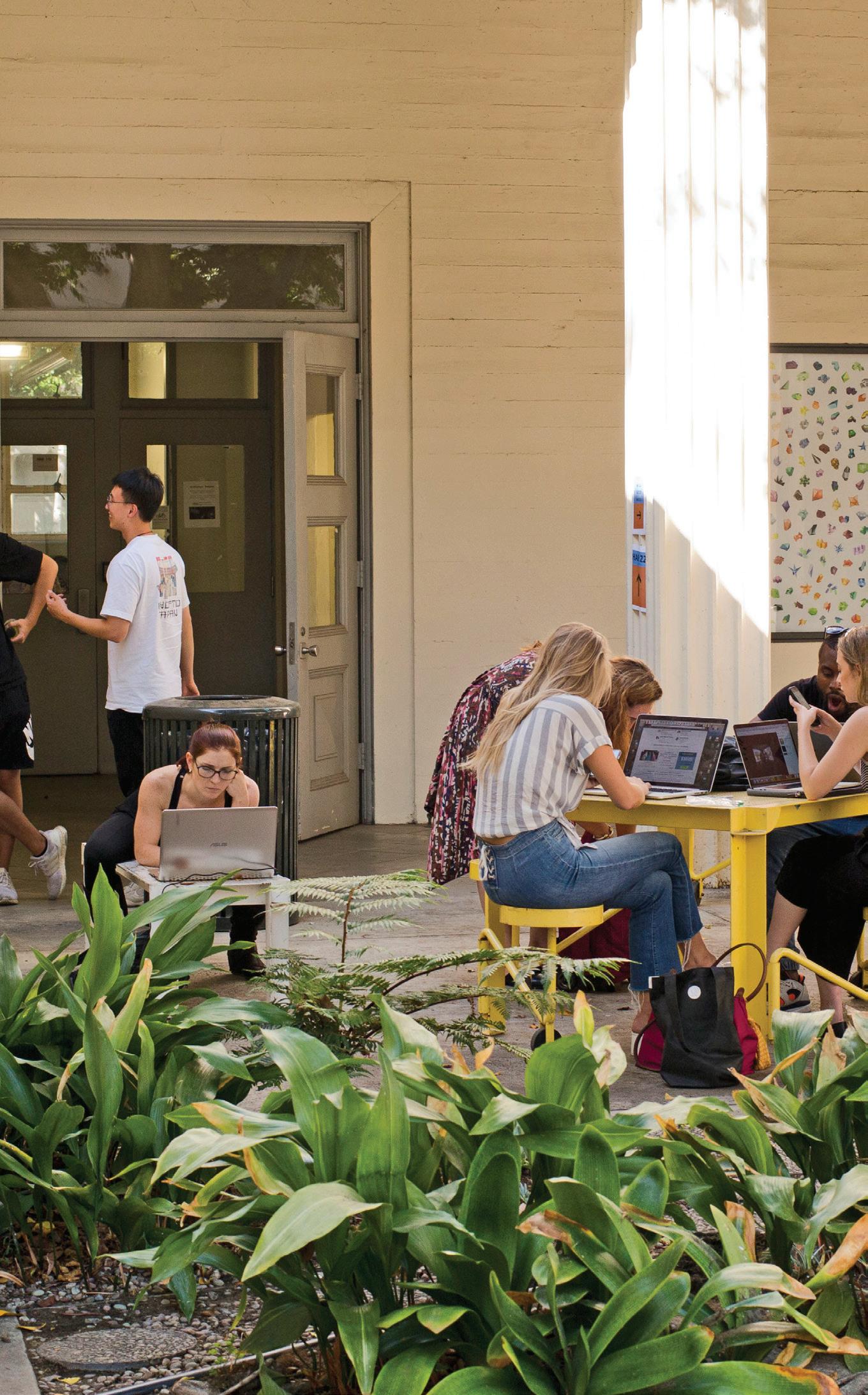
20 VIEWBOOK
This prestigious designation joins you to the community of students and faculty and to a network of 451,000 alumni, offering an unsurpassed support system for every student. This vibrant setting presents numerous opportunities to get involved academically and socially, not only on campus but within the surrounding community and city as well. With 1,000 student organizations, you can explore your passions and interests, including recreational sports, student government, religious and multicultural organizations, Greek life, community service opportunities and much more. USC offers students countless opportunities and options to enhance their academic careers. You can pursue degrees from 22 different professional schools and choose from 150 minors—the broadest selection of any U.S. university.

21 USC ARCHITECTURE
GLOBAL STUDIES

22 VIEWBOOK
CURRENT PROGRAMS OFFERED*
UNDERGRADUATE GRADUATE
FALL PROGRAM IN ASIA
A sian Architecture & Landscape Urbanism/Eastern Asia
FALL PROGRAM IN SPAIN
SPRING PROGRAM IN ITALY
SUMMER PROGRAM IN FRANCE
FIELD STUDIES IN JAPAN
* All programs are subject to change
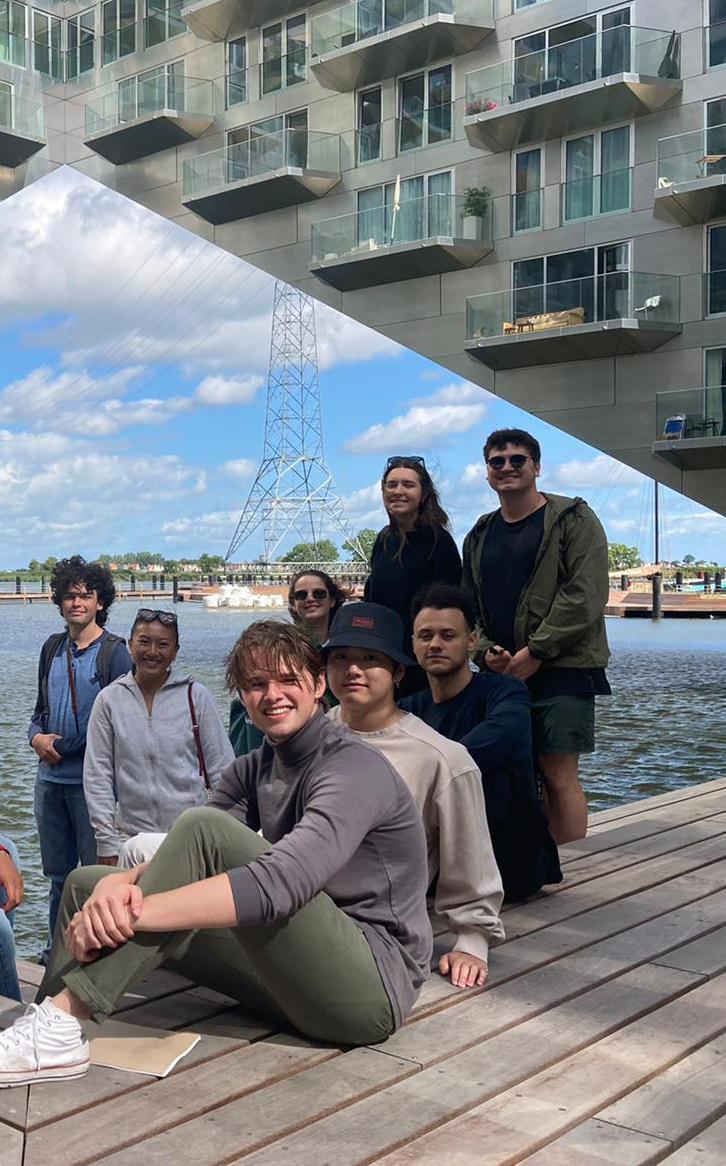
23 USC ARCHITECTURE
THE USC SCHOOL OF ARCHITECTURE OFFERS
MULTIPLE STUDY ABROAD OPPORTUNITIES THAT COINCIDE WITH OUR SPECIFIC ARCHITECTURE CURRICULUM.
Offerings change periodically in order to better meet the needs of students and align with the mission of the School’s global initiatives. Students may take advantage of semesterlong undergraduate study abroad programs, graduate-level overseas workshops and occasional international and domestic travel opportunities as part of class research and field studies. The School has incorporated exciting travel components into its curriculum to enhance opportunities for global knowledge exchange while keeping students on their academic track. Other opportunities available to School of Architecture students include traveling fellowships, humanitarian and research traveling opportunities through architecture-affiliated student organizations, and international and domestic internships.
24 VIEWBOOK

25 USC ARCHITECTURE USC ARCHITECTURE
AFTER GRADUATION
of alumni found full-time employment within the first 6 months after their graduation ( 78% in the first 3 months)
had full-time summer internships while at USC
found their job through the USC Architecture Trojan Network
are now senior-level leadership within their practices
have been promoted to partner or principal in their practices or have started their own firms
* Data collected from a survey of alumni who graduated 2010–2019.
26 VIEWBOOK
91% 67% 48%
39% 10%
Through the ongoing success of so many of our alumni, the School of Architecture has built a well-earned reputation of preparing leaders in our field. Our degree-curriculum has always been intensive, in-depth and topical, with each program fusing history, theory, technology and design into a variety of degree programs that well-prepare our students for the rigors of the professional design practices. Students are encouraged to engage with prestigious firms and companies through internships, gaining valuable first-hand professional experience. Our connections throughout greater Los Angeles extend beyond student services, assisting graduates with career development and job placement. Our graduates from these programs are world-renowned as the foremost designers, practitioners and faculty in architecture of yesterday and today. We hold two Pritzker Prize laureates, Frank Gehry and Thom Mayne, as our alumni, as well as Case Study House Program participants Pierre Koenig, Conrad Buff, Don Hensman and Cal Straub. Paul R. Williams, a graduate of the School, became the first licensed Black architect west of the Mississippi. Countless
27 USC ARCHITECTURE
more of our alumni continue to establish themselves as leaders in local and international practices. William Pereira, Mark Lee, Albert Martin, Jon Jerde, Mark Rios, Ronald Altoon and Gerard Furbershaw all established their own local offices after graduating from USC, which quickly grew into practices with worldwide reputations for groundbreaking architecture, landscape architecture and design.
28 VIEWBOOK
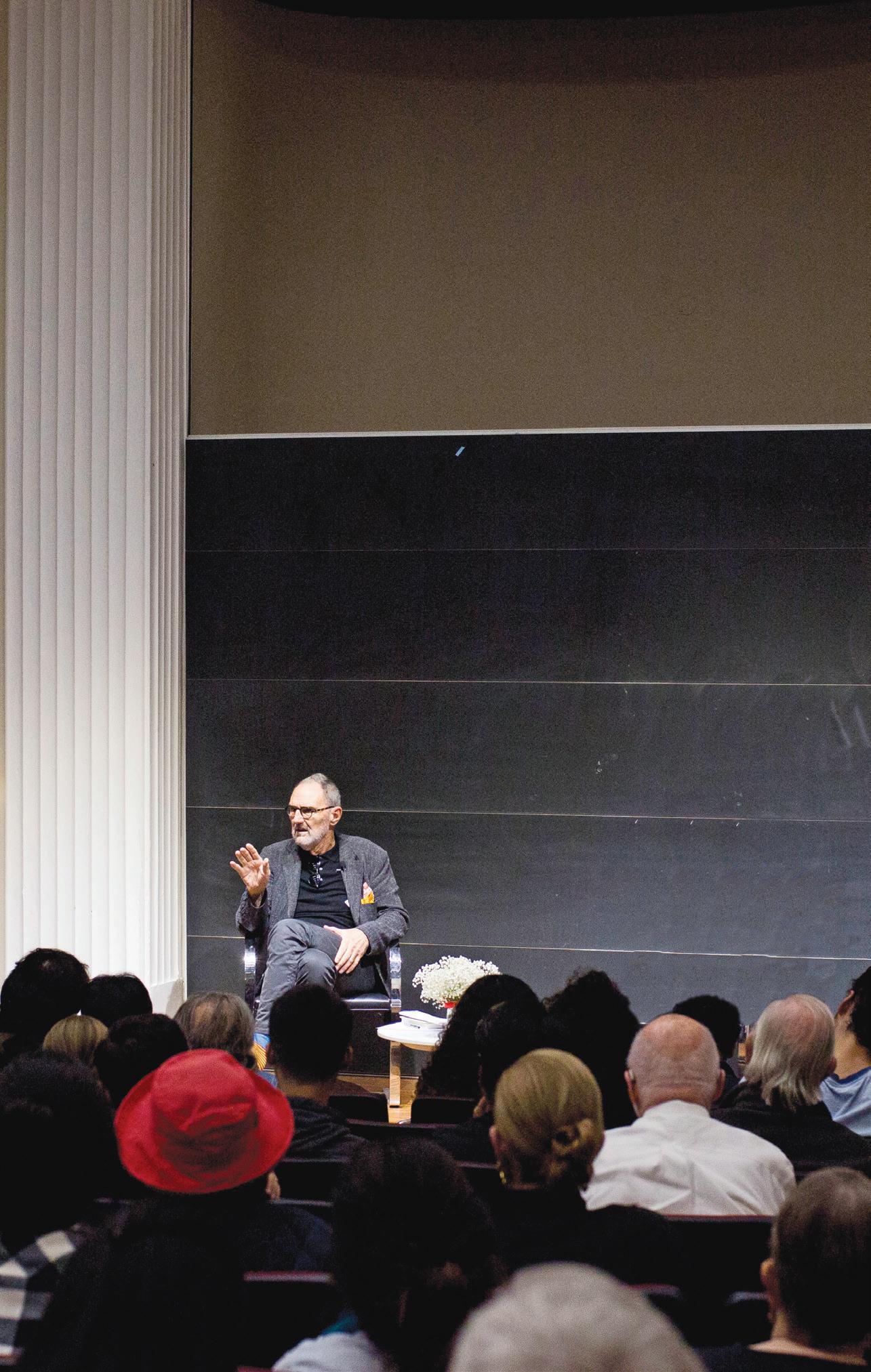
ARCHITECTURAL GUILD

Founded in 1958, the USC Architectural Guild provides guidance and insight into real-world experiences for students beyond the classroom. The Guild encourages their alumni and non-alumni members and peers – leaders in architecture, design, construction, engineering, finance, and real estate development – to give back and lead the way in career development and mentorship, scholarship and global fellowship support, and technology and material resources. Through knowledge, networking, and know-how, the Architectural Guild enriches and amplifies the USC education, inspiring architectural students to find purpose, meaning, and fulfillment in their pursuits.
Annually, the Guild raises funds and provides programs for students through activities such as the mentorship program, the Design Charrette, and Career Week. The latter offers professional development workshops and culminates in a Firm Fair, where students network and explore opportunities for internships and jobs with top local and national firms.
31 USC ARCHITECTURE
RESOURCES & FACILITIES
Located in the Harris Hall and Watt Hall complex of buildings and courtyards on the University Park Campus, the USC School of Architecture comprises over 50,000-square feet of design studios, classrooms, galleries, workshops, and laboratories specifically designed to offer an immersive and stimulating learning environment. Each semester, all architecture students are assigned their own design workstations with storage. The University provides continuous wireless support, and students have 24-hour, seven-days-a-week access to their studios and workstations.

The School promotes and supports the use of advanced technology for the study of architecture. Our fabrication workshop provides access to the latest in computer modeling and building design analysis software as well as advanced output technologies, including large-format printers, laser cutting, CNC milling, Kuka robotic arms and 3D printing. Virtual reality equipment is used in classes and can be checked out by students for an immersive dive into projects. Additional facilities include a woodshop for model making, a welding facility and a work yard for constructing large-scale projects. The Verle Annis Gallery, Helen Lindhurst Gallery, Rosendin Family Atrium, Gin D. Wong, FAIA Conference Center, and Pierre Koenig Lecture Hall provide exhibition, review and lecture space for the School. The Robert H. Timme Architectural Research Center occupies the 22,000-squarefoot third floor of Watt Hall, providing studio space for the graduate programs as well as faculty offices, research suites, sky gardens and review spaces.
33 USC ARCHITECTURE
PUBLIC LECTURES & EXHIBITIONS

For decades, the USC Lecture Series which includes talks followed by debates and receptions has provided a stimulating environment for the exploration of ideas that permeate the School, Los Angeles and the world.
Speakers are a mix of emerging voices, faculty and leaders in their fields representing the School’s academic disciplines and professions, ensuring that students receive access to thought provoking themes and ideas. Notable past speakers have included Pritzker prize winning architects Thom Mayne and Zaha Hadid, MAD founder Ma Yansong, ASLA Design Medal winning Landscape Architect Kathryn Gustafson, Snohetta founder Craig Dykers and Brent Leggs of the National Trust for Historic Preservation.
Lectures are typically held on Monday evenings in the Gin D. Wong, FAIA Conference Center, Harris Hall. Lectures are free and open to the public, and no reservations are required.
34 VIEWBOOK

35 USC ARCHITECTURE

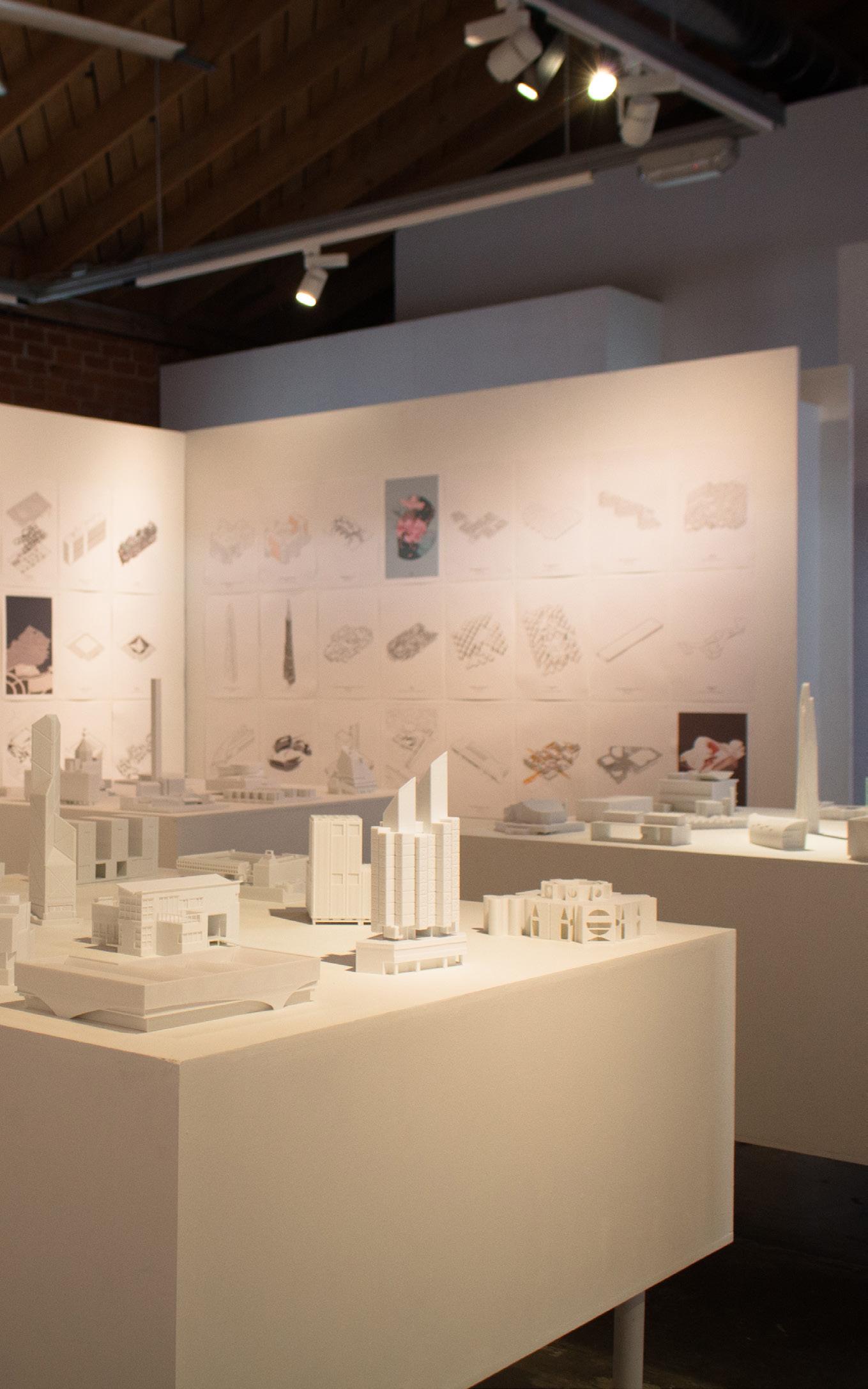

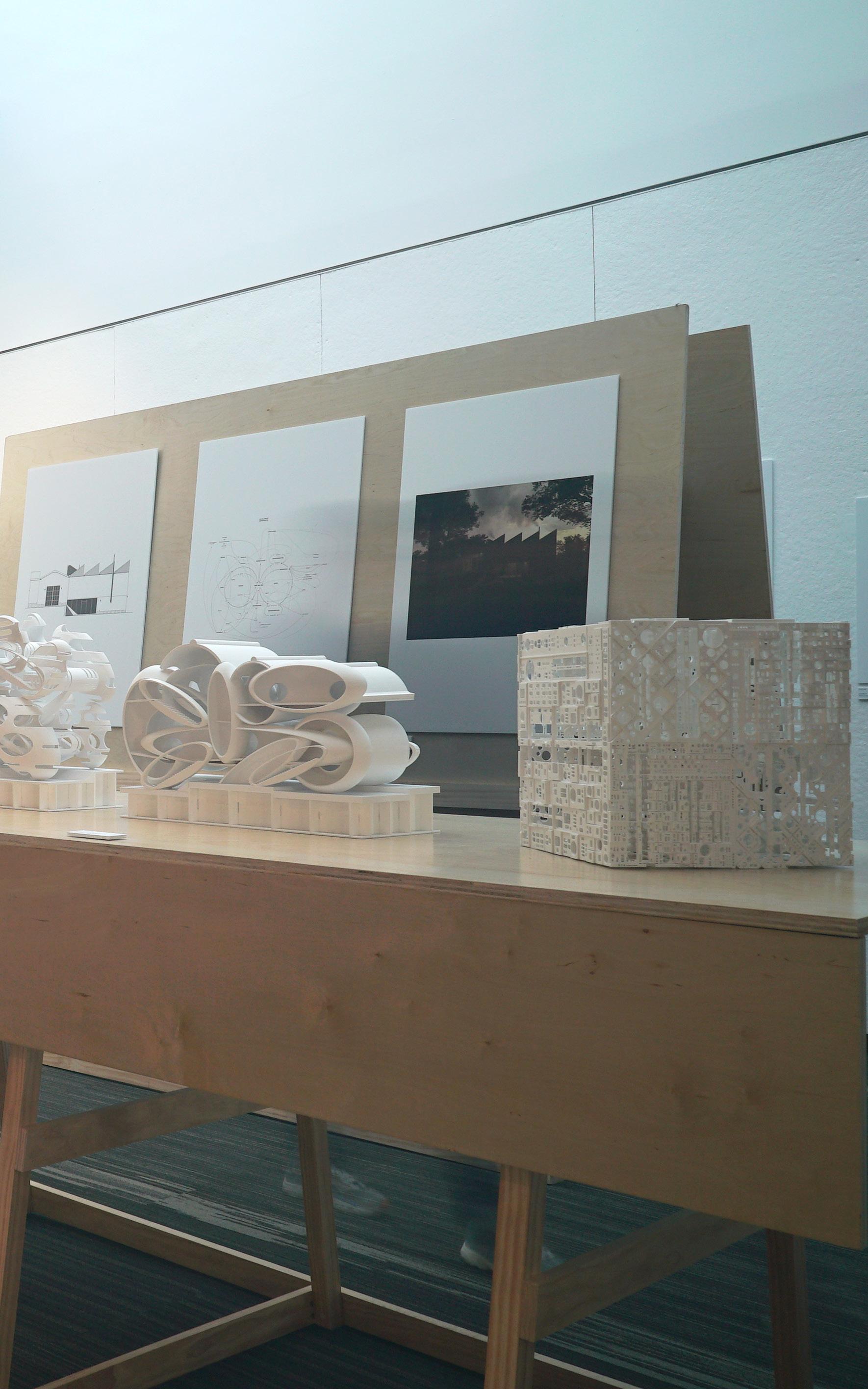
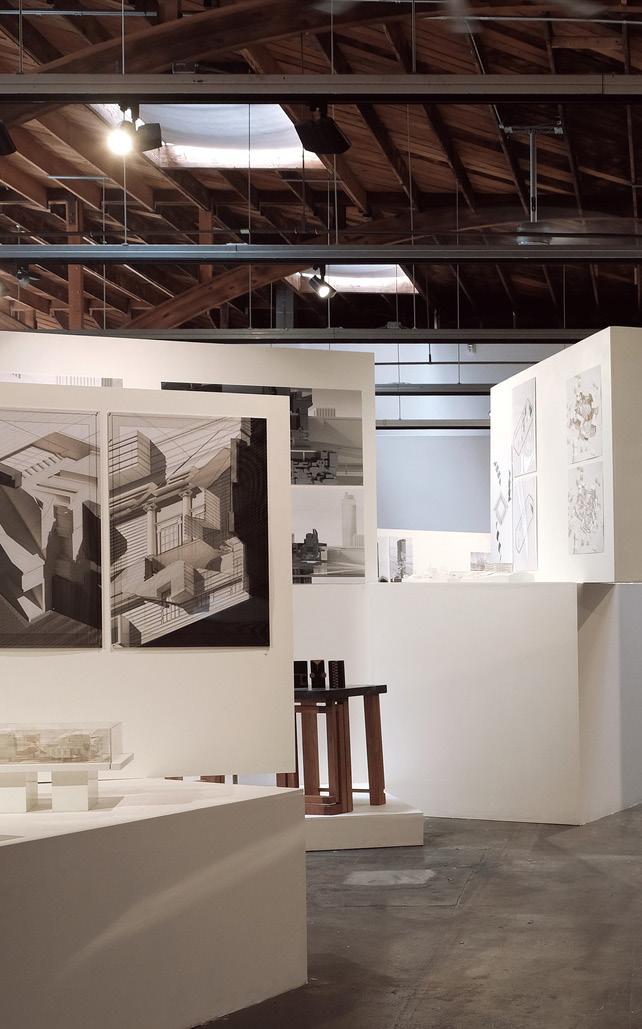
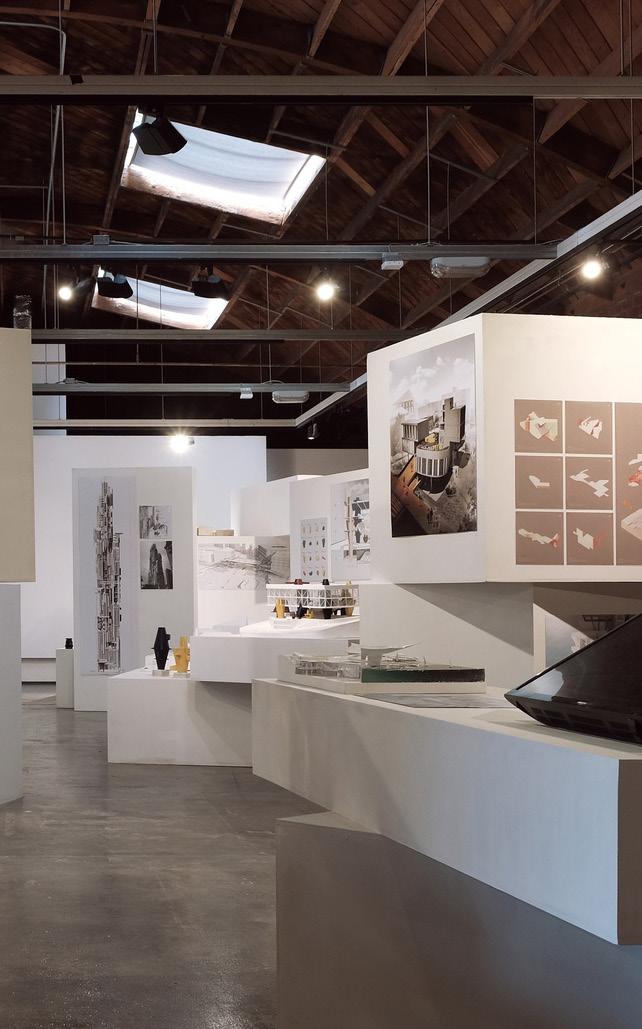
DEGREE PROGRAMS
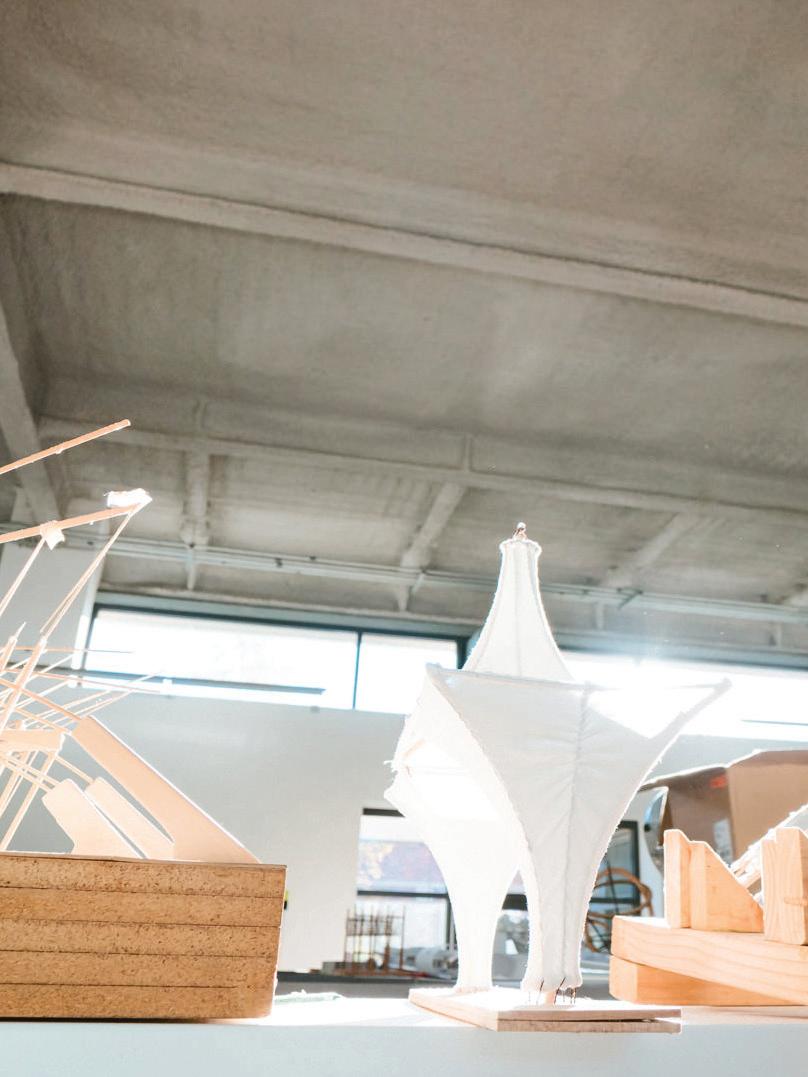
2 BACHELOR’S DEGREES
5 MASTER’S DEGREES
4 DUAL MASTER’S DEGREES
6 CERTIFICATE PROGRAMS
Students complete courses in theory and history alongside hands-on studio courses and fieldwork in robust, interactive learning environments.
43 USC ARCHITECTURE
NATIONAL ARCHITECTURAL ACCREDITING BOARD STATEMENT
In the United States, most registration boards require a degree from an accredited professional degree program as a prerequisite for licensure. The National Architectural Accrediting Board (NAAB), which is the sole agency authorized to accredit professional degree programs in architecture offered by institutions with U.S. regional accreditation, recognizes three types of degrees: The Bachelor of Architecture, the Master of Architecture, and the Doctor of Architecture. A program may be granted an 8-year, 3-year, or 2-year term of accreditation, depending on the extent of its conformance with established educational standards.
Doctor of Architecture and Master of Architecture degree programs may require a pre-professional undergraduate degree in architecture for admission. However, the pre-professional degree is not, by itself, recognized as an accredited degree.
The University of Southern California School of Architecture offers the following NAAB-accredited degree programs:
BACHELOR OF ARCHITECTURE
160 undergraduate credits
MASTER OF ARCHITECTURE
Pre-professional degree + 64 graduate credits
MASTER OF ARCHITECTURE
Non-pre-professional degree + 102 graduate credits
Next accreditation visit for all programs: 2022
LANDSCAPE ARCHITECTURAL ACCREDITATION BOARD STATEMENT
The three-year first professional degree program in landscape architecture received its initial accreditation in 2011 by the Landscape Architectural Accreditation Board (LAAB). We successfully completed our latest review in November of 2017 and were granted the maximum renewal of six years.
44 VIEWBOOK
45 USC ARCHITECTURE
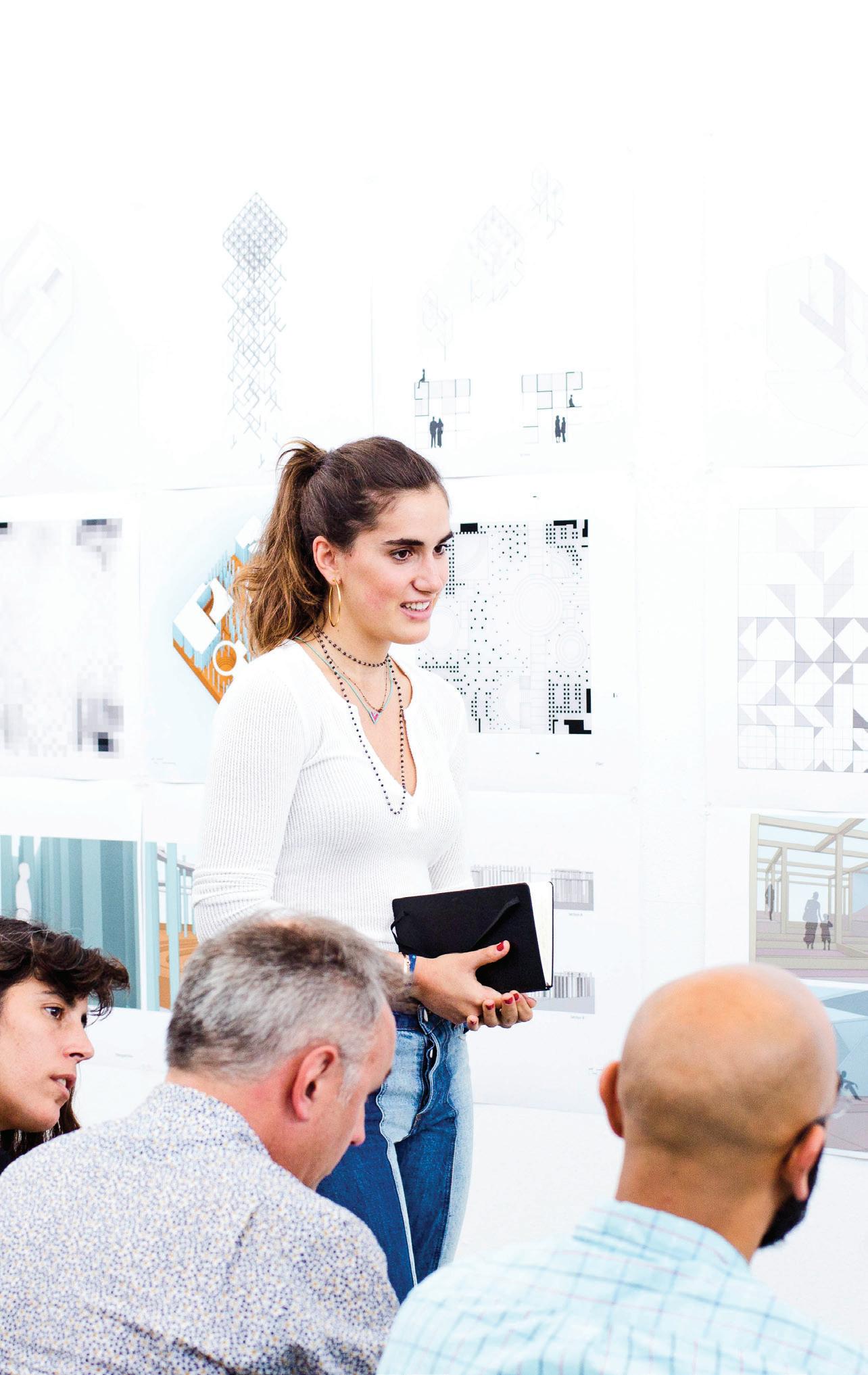
UNDER GRAD UATE PRO GRAMS
47 USC ARCHITECTURE
DORIS SUNG
DIRECTOR OF UNDERGRADUATE ARCHITECTURE PROGRAMS
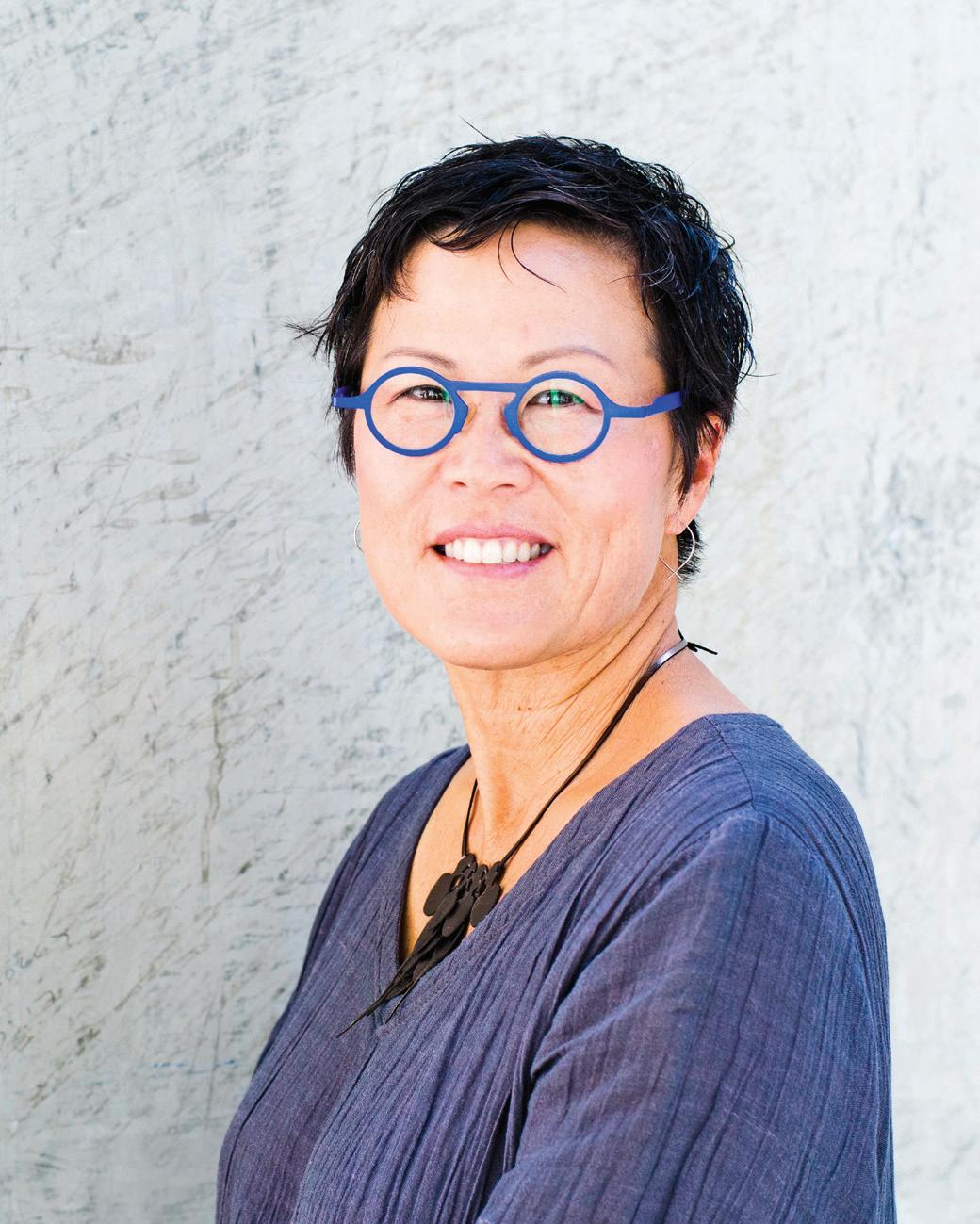
48 VIEWBOOK
“OUR
PROGRAM STRESSES
THE IMPORTANCE OF BEING A CITIZEN ARCHITECT. IT IS IMPORTANT FOR STUDENTS TO FIND PURPOSE IN DESIGN IN ORDER TO MAKE THIS WORLD A BETTER PLACE FOR ALL. IN DOING SO, WORK WILL NOT BE LABORIOUS BUT RATHER SOMETHING MUCH MORE FULFILLING.”
49 USC ARCHITECTURE
BACHELOR OF ARCHITECTURE
5 Years, 160 Units
Our Bachelor of Architecture First Professional Degree is a STEM-designated program (CIP Code 04.0902). The STEM designation allows international students to be eligible for a 24-month extension of the Optional Practical Training (OPT) period (for a total eligibility of up to 36 months instead of the maximum 12 months of eligibility for non-STEM disciplines).
50 VIEWBOOK
The Bachelor of Architecture provides a mix of architectural and general university studies throughout the degree program. The five-year, ten semester curriculum includes two cycles of development. The first six semesters provide an intensive foundation in understanding architecture through design and media studios, building technology and history/theory courses and concludes with integrative studies.
The final four semesters explore broad aspects of architecture designed to develop individual student strengths and interests. In their fourth year, students can select various topic studio and electives on campus or in one of our global studies programs. In the fifth year, fall semester, students undertake a comprehensive design project while simultaneously examining a research topic of personal interest. The final semester culminates in the development of that research topic into a final degree project for public exhibition.
51 USC ARCHITECTURE
BACHELOR OF SCIENCE IN ARCHITECTURE + INVENTIVE TECHNOLOGIES
4 Years, 128 Units
52 VIEWBOOK
The Bachelor of Science in Architecture + Inventive Technologies examines the built environment through the lenses of architecture, technology and entrepreneurship and aims to contribute to the resolution of intractable problems such as climate change, social justice and societal wellbeing through the invention and development of new products at an architectural scale.
This four-year degree program is for students who want to work at the nexus of architecture, entrepreneurship, and design technologies. Students will learn various processes of design from conceptual ideation to digital modeling, from full-scale prototyping to manufacturing viability, and from real-time testing in the lab to bringing the products to the marketplace. In our ever-evolving world, the impact of new products is immeasurable for the architecture industry.
53 USC ARCHITECTURE

NICK HEINER
ARCH 202B
ARCHITECTURAL DESIGN ||
SPRING 2022

AMANDA TIAN
ARCH 502
ARCHITECTURAL DESIGN V SPRING 2022
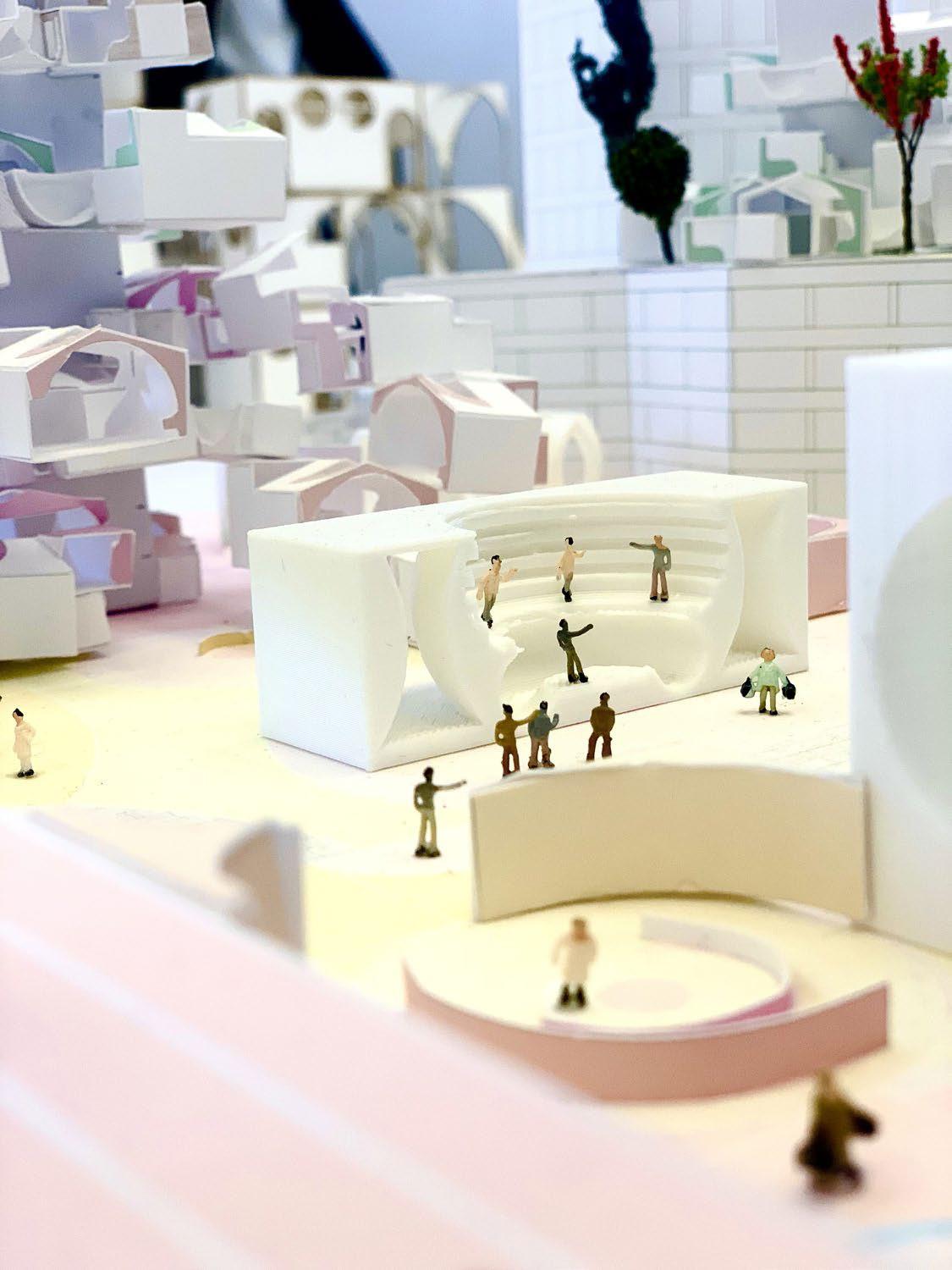
56 VIEWBOOK

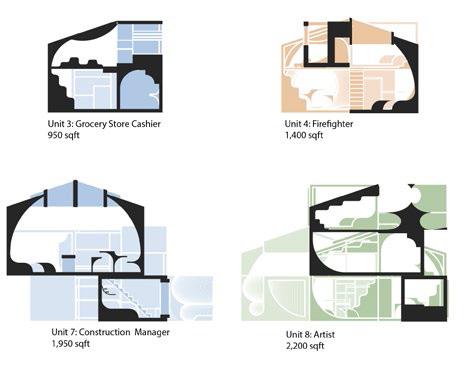

57 USC ARCHITECTURE
CECI STRATTON
ARCH 502
ARCHITECTURAL DESIGN V SPRING 2022
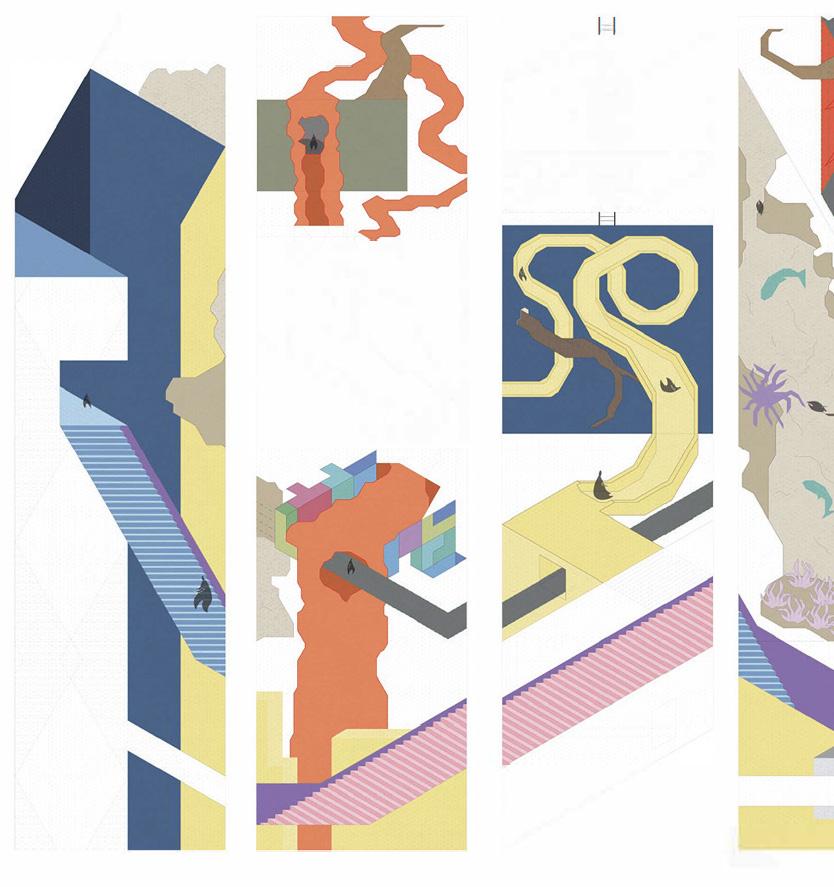
58 VIEWBOOK

59 USC ARCHITECTURE

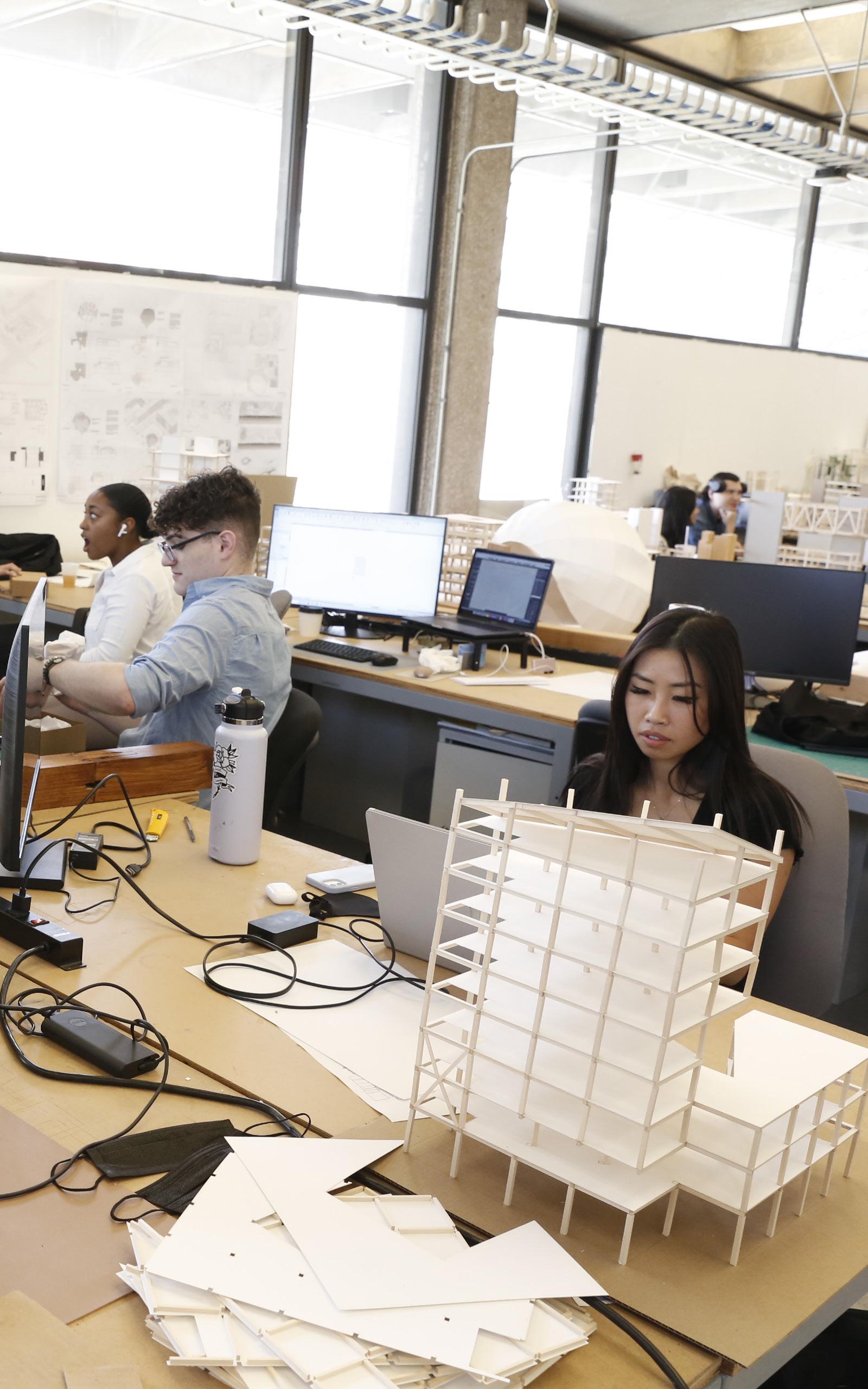
LINDSEY LENT
ARCH 502
ARCHITECTURAL DESIGN V SPRING 2022


LINDSEY LENT
ARCH 502
ARCHITECTURAL DESIGN V SPRING 2022

64 VIEWBOOK

65 USC ARCHITECTURE
Branch Library. Model Photos
202B / Spring 2021 /PROJECT 02 Part II
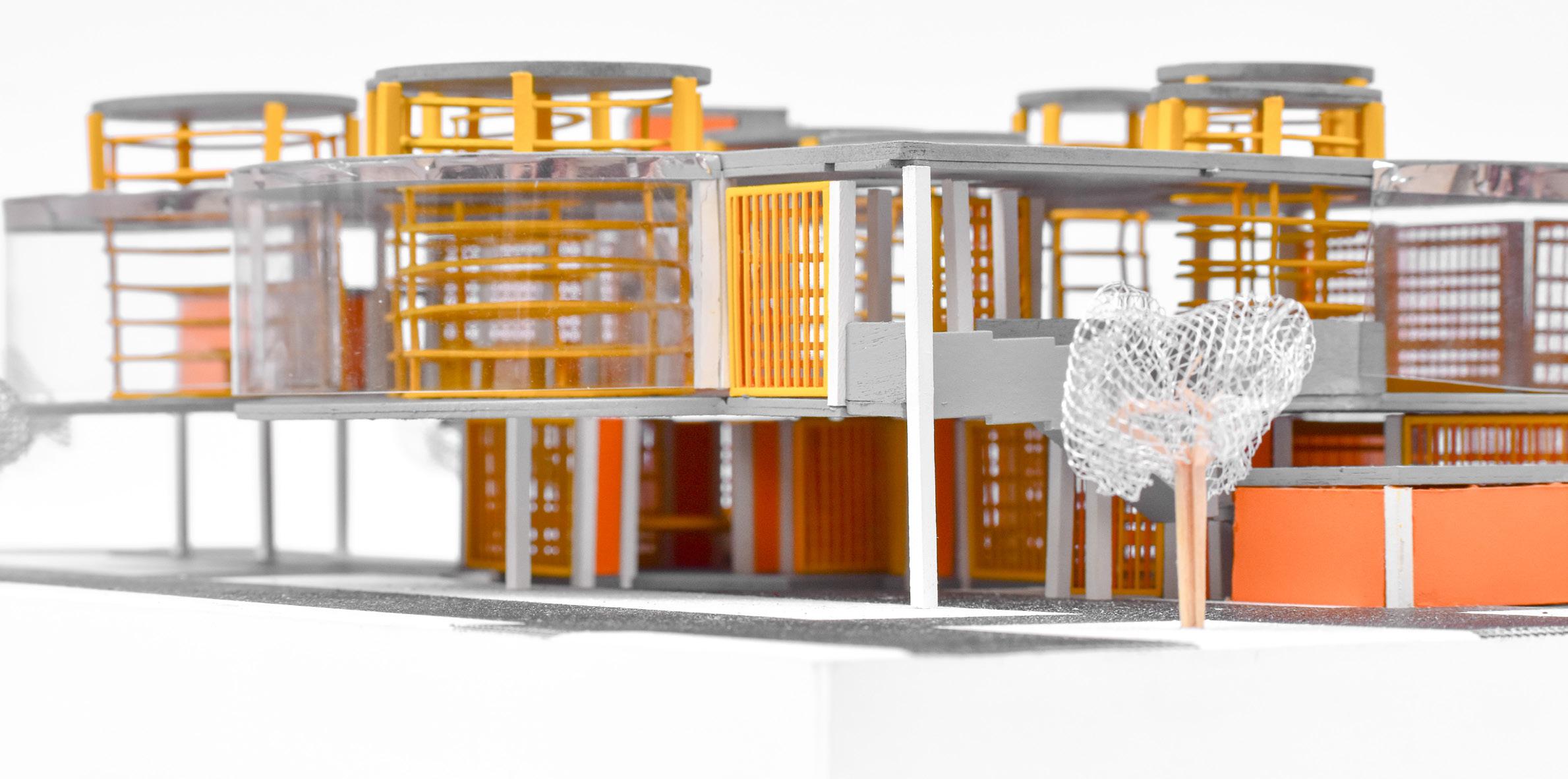
66 VIEWBOOK

67 USC ARCHITECTURE 22 JUSTIN KACZENDER ARCH 202B ARCHITECTURAL DESIGN ||
UNDERGRADUATE ADMISSIONS

VIEWBOOK
WITH CLOSE TO 100 FACULTY MEMBERS AND 420 UNDERGRADUATE STUDENTS, THE USC SCHOOL OF ARCHITECTURE IS COMMITTED TO SHAPING STUDENT EXPERIENCES TO HELP YOU PERFORM WELL IN THE PROFESSION AND LEAD THE DISCIPLINE IN NEW DIRECTIONS, SENSING, RESPONDING TO AND CREATING POSITIVE CHANGE IN SOCIETY.
ERICK REYES

69 USC ARCHITECTURE
ARCH 502 ARCHITECTURAL DESIGN V
Your experience in the program will be a continuous act of discovery: of observing, recording, interpreting, and finally, inventing proposals for the built environment that are in response to ideas and critical intentions. As the only private school of architecture based at a major research university on the West Coast, the school understands architecture as a fundamental intellectual discipline among the arts, humanities, and sciences. USC takes a holistic, qualitative approach to reviewing applications. Grades and academic rigor are weighed against personal qualities such as leadership, service and unique talents. We look for those students we believe would be an ideal fit for, and thrive in, the challenging academic environment USC provides. We welcome you to apply and start your journey as a member of the Trojan Family.
70 VIEWBOOK
ARCH.USC.EDU/UNDERGRADUATE-APPLY
71 USC ARCHITECTURE
ARCH.USC.EDU/UNDERGRADUATE-APPLY
72 VIEWBOOK
2023 UNDERGRADUATE APPLICANT CHECKLIST
Common Application
Portfolio + Architecture Writing + Video Supplement (SlideRoom)
Common Application School Report
Letter of Recommendation from a Teacher or a Counselor Via Common Application Via SlideRoom
High School Transcript(s)
College Transcript(s) If coursework completed
Official Test Scores: SAT or ACT Optional
Optional if applying with less than 30 semester units of college
Fall Grades (when available)
INTERNATIONAL APPLICANTS MUST ALSO SUBMIT:
Financial Statement of Personal or Family Support
TOEFL, IELTS, or PTE Academic scores, if the student’s native language is not English
Details about the above requirements may be found at: ADMISSION.USC.EDU/APPLY/
73 USC ARCHITECTURE
CHECKLIST FIRST-YEAR TRANSFER
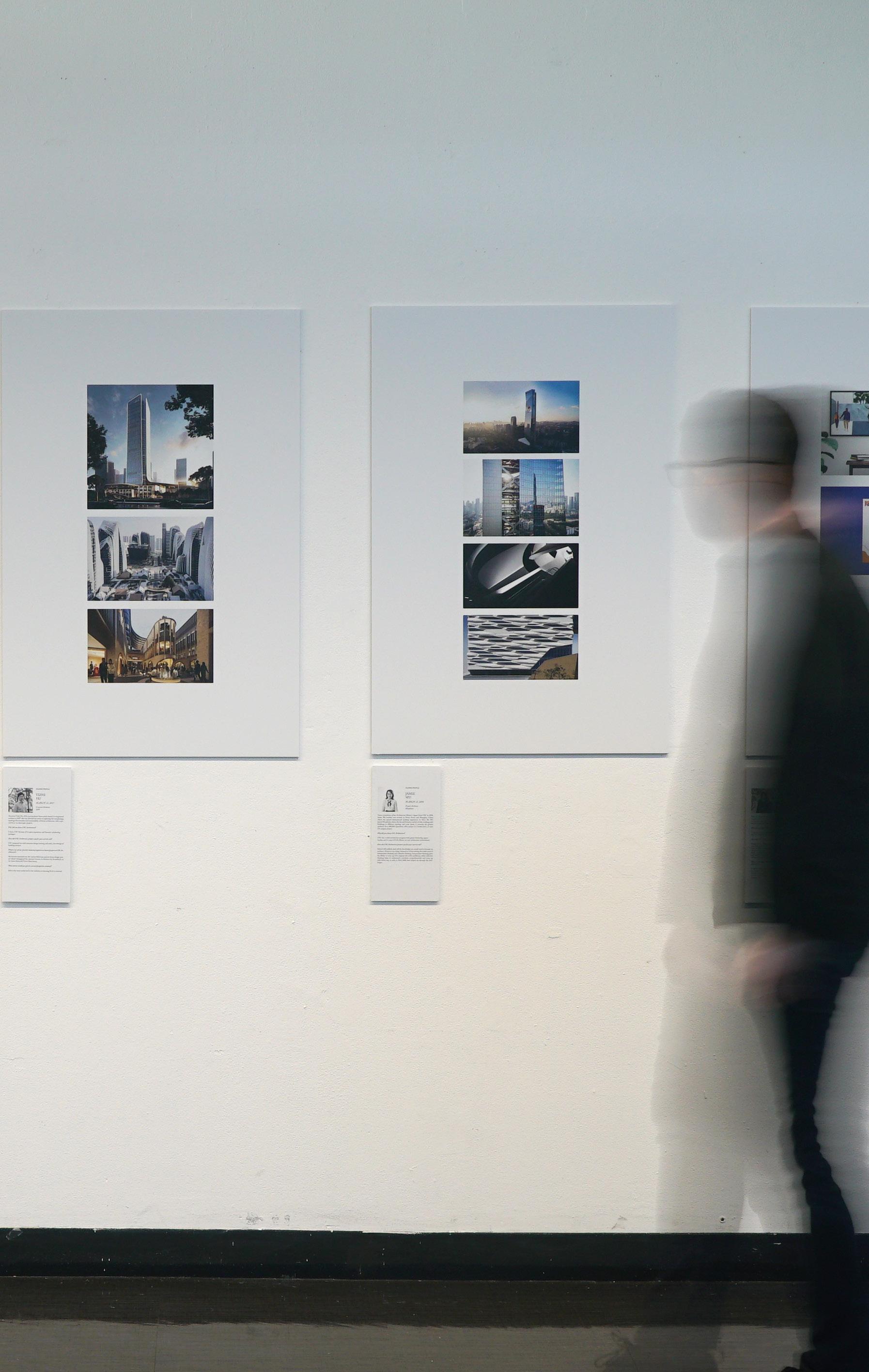
GRAD UATE PRO GRAMS
75 USC ARCHITECTURE
ALVIN HUANG
DIRECTOR OF GRADUATE & POST-PROFESSIONAL ARCHITECTURE PROGRAMS

76 VIEWBOOK
“AT USC ARCHITECTURE, WE PUSH STUDENTS TO IMAGINE ALTERNATIVES FOR A BETTER, MORE JUST BUILT-ENVIRONMENT BY LEVERAGING EMERGING DESIGN TECHNOLOGIES, ENGAGING WITH COMMUNITIES AND SOCIAL RESPONSIBILITY, AND CHALLENGING THE STATUS QUO THROUGH THOUGHT-PROVOKING AND PROGRESSIVE DESIGN RESEARCH.”
77 USC ARCHITECTURE
MASTER OF ARCHITECTURE
FIRST-PROFESSIONAL 3 Years, 102 Units
For students who have completed a bachelor’s degree with a major other than one of the design professions.
FIRST-PROFESSIONAL WITH ADVANCED
STANDING
2 Years, 64 Units
For students with a pre-professional undergraduate degree in architectural studies.
78 VIEWBOOK
USC Graduate Architecture leverages the extensive experience and wide-ranging expertise of a deeply talented roster of licensed architects, design-thinkers, and design scholars to explore the power of design to change the built environment. With a deep commitment to disciplinary knowledge, civic and spatial justice, and innovation in architectural practice, we take the term Citizen Architect very seriously.
The Master of Architecture is built on three levels. The first level is dedicated to introducing essential disciplinary knowledge and the fundamental design skills required for the NAAB-accredited degree. The second level builds upon this foundation with increasingly refined technical knowledge and advanced professional expertise. The final level culminates with a year of individually directed design research, with master classes and a directed design research project (thesis) focused on the student’s emergent architectural interests.
79 USC ARCHITECTURE
All three levels draw on the USC School of Architecture’s commitment to spatial justice, the University’s extended resources, and the inspiration of Los Angeles. Firmly rooted in an investigative mode of critical, professional practice, the program’s aim is for every graduate to be prepared for the challenges of the 21st century.
Our Master of Architecture First Professional Degree Program is a STEM-designated program (CIP Code 04.0902). This applies to both the three-year and two-year tracks. The STEM designation allows international students to be eligible for a 24-month extension of the Optional Practical Training (OPT) period (for a total eligibility of up to 36 months instead of the maximum 12 months of eligibility for non-STEM disciplines).
80 VIEWBOOK
g e e

MASTER OF ADVANCED ARCHITECTURAL RESEARCH STUDIES
POST-PROFESSIONAL 1 Year, 42 Units
The Master of Advanced Architectural Research Studies (M.AARS) program is a 12-month, three-semester post-professional graduate degree, with concentrations in either City Design + Housing (CDH) or Performative Design + Technology (PDT), that challenges students with existing professional degrees in architecture to focus on design as a form of focused and specialized research.
The most pressing issues our society faces are directly impacted by the design of the built environment. The M.AARS programs provide post-graduates an opportunity to become design specialists with focused expertise regarding issues of urban equity and design technologies. etetet etete etet ete
82 VIEWBOOK
CONCENTRATIONS
M.AARS CITY DESIGN + HOUSING
The City Design + Housing (CDH) concentration focuses on inclusive and equitable city design and housing production. Operating under the premise that housing and access to the city is a right, the CDH program proactively engages the current crises in urban development and housing provision with research and design solutions, both locally and globally.
M.AARS PERFORMATIVE DESIGN + TECHNOLOGY
The Performative Design + Technology (PDT) concentration focuses on the integration of technology within the digital design process. The PDT program seeks to explore the role of data and technology in the built environment. The program merges architectural and parametric design to focus on scholarly research and professional development in relevant areas that are affecting the built environment now and in the future.
83 USC ARCHITECTURE
ALISON HIRSCH

DIRECTOR OF LANDSCAPE
ARCHITECTURE + URBANISM PROGRAM
84 VIEWBOOK
85 USC ARCHITECTURE
“I LOVE TEACHING LANDSCAPE ARCHITECTURE AT USC BECAUSE OF THE COMPLEX REGIONAL GEOGRAPHY WE ARE IMMERSED IN, AS A LABORATORY FOR THE EXPLORATION OF SOME OF THE MOST PRESSING ENVIRONMENTAL CHALLENGES OF TODAY.”
MASTER OF LANDSCAPE ARCHITECTURE
FIRST-PROFESSIONAL
3 Years, 96 Units
For students entering without a previous Bachelor of Landscape Architecture degree.
FIRST-PROFESSIONAL
WITH ADVANCED STANDING
2 Years, 64 Units
For students who have completed an undergraduate professional Landscape Architecture degree and have completed previous coursework in plant materials, landscape construction and media.
Our Master of Landscape Architecture First Professional Degree Program is a STEM-designated program (CIP Code 03.0103 Environmental Studies). This applies to both the three-year and two-year tracks. The STEM designation allows international students to be eligible for a 24-month extension of the Optional Practical Training (OPT) period (for a total eligibility of up to 36 months instead of the maximum 12 months of eligibility for non-STEM disciplines).
86 VIEWBOOK
Landscapes are the dynamic synthesis of natural systems, sociocultural forces and the physical material of the constructed world. The Master’s Program in Landscape Architecture + Urbanism uses the complex regional geography of Southern California as a laboratory to generate and test responses to the planet’s most pressing environmental challenges, including resounding impacts of climate change, rapid urbanization, social and environmental injustice, and the interface of nature and technology.
Expanding from the region to landscapes throughout the globe, students conduct rigorous design-research to develop multi-scalar innovations in performative regional infrastructures, equitable urban frameworks and public spaces, and healthful biophysical systems. The program focuses on climate stress and pressures of urbanization and how to utilize landscape strategies to shape those systems, spaces, cities and infrastructures to imagine more resilient futures – socially and ecologically.
87 USC ARCHITECTURE
KYLE KONIS
DIRECTOR OF THE
CHASE L. LEAVITT MASTER OF BUILDING SCIENCE PROGRAM
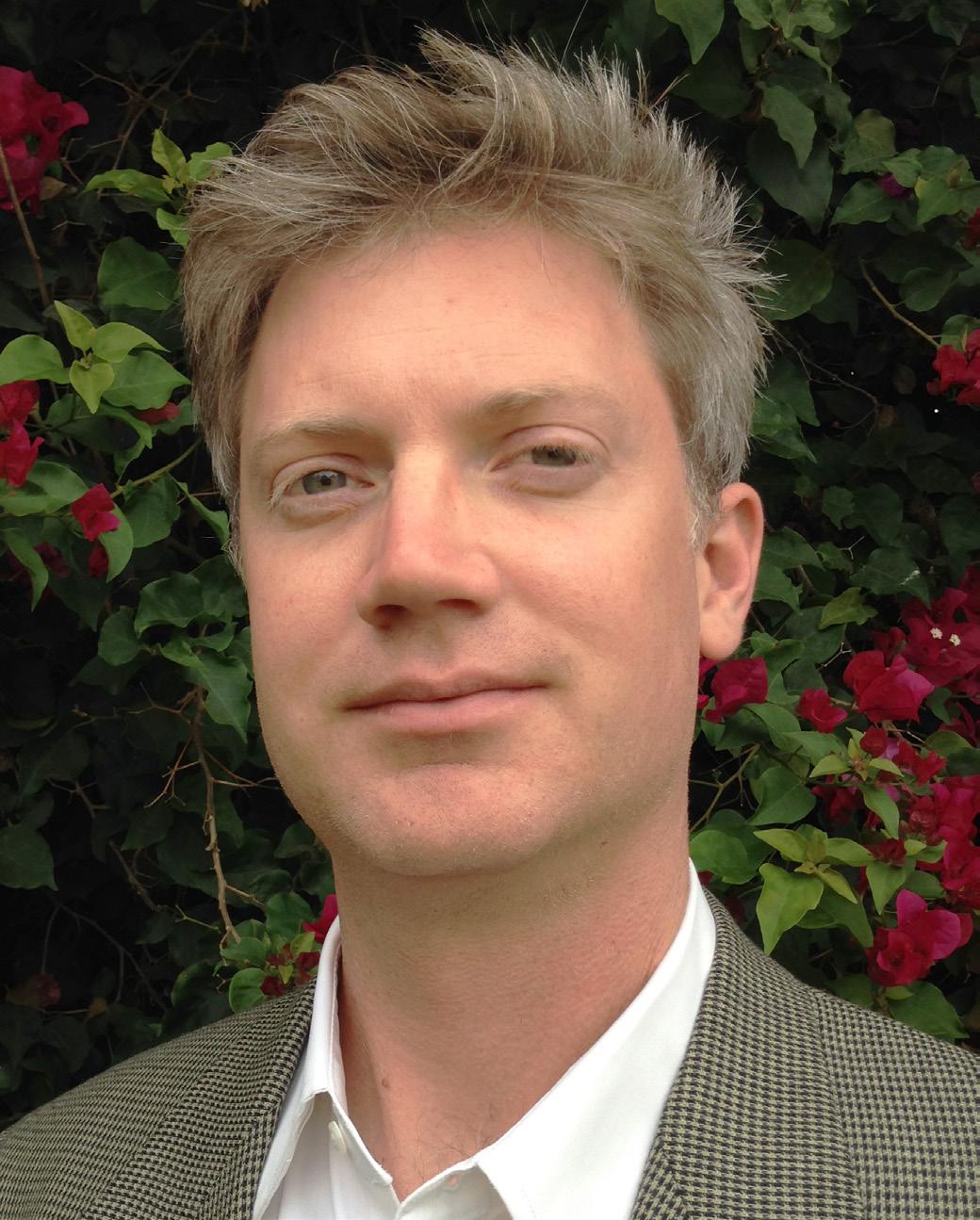
88 VIEWBOOK
“THE
GRADUATE BUILDING SCIENCE PROGRAM
AT USC IS POWERFULLY CONNECTED TO THE PROFESSIONAL COMMUNITY. WE HAVE MANY OF THE WORLDS’ LEADING EXPERTS WHO ARE WITHIN A SHORT DRIVE OF OUR CAMPUS, AND WE GET THE BEST-OFTHE-BEST FOR REVIEWS AND CONSULTING.”
89 USC ARCHITECTURE
MASTER OF BUILDING SCIENCE
2 Years, 48 Units
For students with a background in architecture, engineering or related areas.
Building Science at the USC School of Architecture recognizes that exemplary architecture requires innovative responses to natural forces. The integration of the study of building sciences with knowledge of current practices and new technologies creates synergistic and holistic architectural design that satisfies performative goals. The Master of Building Science program addresses the need for a new generation of design professionals prepared to bring appropriate technology to the design of a sustainable environment while recognizing the critical impacts that science and technology can play in social and cultural realms.
90 VIEWBOOK
WITHIN THIS CONTEXT, THE PROGRAM EMPHASIZES:
1. The integration of planning, design, and technology to form a coherent, interdependent force for the appropriate construction of urban places.
2. Recognition of the ecological importance of energy-conscious design and construction as well as the social value of “citizen architects” creating places in which natural forces and systems are utilized rather than suppressed.
3. The development of research and design methods suited to the complexity of building in urban settings and effective in the use of extensive information. Students are individually guided through their study and complete a thesis-based research project.
91 USC ARCHITECTURE
TRINIDAD RICO
DIRECTOR OF GRADUATE
PROGRAMS IN HERITAGE CONSERVATION
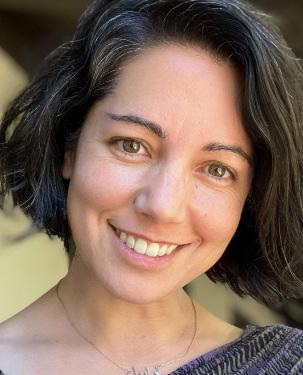
92 VIEWBOOK
“OUR MHC PROGRAM IS THE ONLY PROGRAM OF ITS KIND IN CALIFORNIA. WE SEEK TO CELEBRATE DIVERSITY IN ALL THE WAYS YOU MIGHT DEFINE IT. JUST AS LOS ANGELES IS A DYNAMIC COSMOPOLITAN URBAN HUB, SO, TOO, IS THE PRACTICE OF CONSERVATION IN THIS CONTEXT.”
93 USC ARCHITECTURE
MASTER OF HERITAGE CONSERVATION
2 Years, 48 Units
For students without a related undergraduate degree.
ADVANCED STANDING
1.5 Years, 36 Units
For students with a graduate certificate in historic preservation or heritage conservation; professional degree or professional registration in architecture or engineering; graduate degree in a related field, such as architectural history, planning or history; and at least five years of teaching or practice (may be combined).
94 VIEWBOOK
The Master of Heritage Conservation program exposes students to a broad range of topics including policy and planning, conservation theory, social justice and equity, global conservation efforts, architectural and landscape history, best practices in resource documentation and evaluation, sustainability, and historic site management. Students are encouraged to take advantage of the many academic resources in the broader University, including taking courses in American studies and ethnicity, real estate, regional history, urban planning, and spatial sciences.
Program faculty are leaders in the field, a blend of academics and practitioners that grapple with conservation in real time, seeking creative solutions that balance the integrity of the past with a sustainable future. Through this broad exposure, students begin to formulate their professional path within the discipline. Embedded in the USC School of Architecture, heritage conservation students are instantly part of a multidisciplinary environment, linking landscape architecture, building science, architecture and conservation.
95 USC ARCHITECTURE
DUAL DEGREE PROGRAMS
MASTER OF HERITAGE CONSERVATION/MASTER OF URBAN PLANNING
2 Years, 60 Units
For people who want to create livable cities rooted in history and culture, this degree offers the best of both worlds. MHC/MUP students are deeply curious about why the built environment is the way it is—and how they can make it work for everyone.
MASTER OF LANDSCAPE ARCHITECTURE/MASTER OF URBAN PLANNING
2.5-3.5 Years, 100 Units
This Program focuses on the integration of architectural design, building performance, and technology, within the context of digital design and fabrication. In this program, students will explore digital and analog techniques for discovering form through variable material and geometric organizations and force simulations, while simultaneously considering the design opportunities being afforded by advances in computation and fabrication technologies.
96 VIEWBOOK
MASTER OF BUILDING SCIENCE/MASTER OF HERITAGE CONSERVATION
2 Years, 72 Units
The primary objective of the dual degree curriculum is to impart to students a basic familiarity with the origins and development of the philosophies, theories, and practices of building science and heritage conservation for doctoral studies or a career in urban design, landscape architecture and urban planning.
MASTER OF HERITAGE CONSERVATION/MASTER OF LANDSCAPE ARCHITECTURE
2.5-3.5 Years, 87-111 Units
The MHC/MLA dual degree program has been developed so that students will graduate from this program with a broad practical knowledge of the techniques and strategies for conserving the existing built environment through the lens of cultural landscape studies and landscape architecture.
97 USC ARCHITECTURE
CERTIFICATE PROGRAMS
ARCHITECTURE
The focus of this program is on understanding the broad and complex role of architecture within the urban context. Studios examine cities throughout the world where conditions of incresing density, environmental challenges and cultural complexity require design initiatives that support amenity, sustainability and cultural meaning. This 14-unit certificate is open to graduate students not pursuing a master’s degree in architecture.
BUILDING SCIENCE
This certificate designed for working professionals and graduate students (with the exception of students enrolled in the MBS degree program) to acquire understanding of core issues and knowledge related to building science. This 14-unit program requires graduate standing.
SUSTAINABLE DESIGN
The 14-unit certificate provides students with the tools necessary to understand and quantify sources of energy use in buildings and landscapes and to use design of natural and man-made systems to reduce their energy use. Students will learn to make informed sustainable design choices that consider the preformance of the built environment related to the energy required to maintain it, and the energy required to replace it. Environmental, economic and socially responsible solutions will be explored through the coursework.
98 VIEWBOOK
HERITAGE CONSERVATION
Graduate certificates offer master’s students the opportunity to explore interdisciplinary topics through a curated set of electives. Students external to the School of Architecture should apply through the USC Graduate Application. Currently enrolled master’s students should confer with their academic advisor.
LANDSCAPE ARCHITECTURE
This certificate is designed to provide students with the deep knowledge and skills necessary for careers in the increasingly technical field of façade system design, fabrication, delivery and operation.
BUIDING FAÇADE ART SCIENCE AND TECHNOLOGY
This certificate is designed to provide students with the deep knowledge and skills necessary for careers in the increasingly technical field of façade system design, fabrication, delivery and operation.
99 USC ARCHITECTURE
XIXI LUO
M.ARCH+3 ’22
ARCH 605B
GRADUATE ARCHITECTURE DESIGN II – INTEGRATIVE DESIGN STUDIO

100 VIEWBOOK
MENGRUI ZHANG
M.ARCH+3 ’23
ARCH 505A
GRADUATE ARCHITECTURE DESIGN I – SITE

101 USC ARCHITECTURE
BRANDON SMITH
M.ARCH+3 ’23
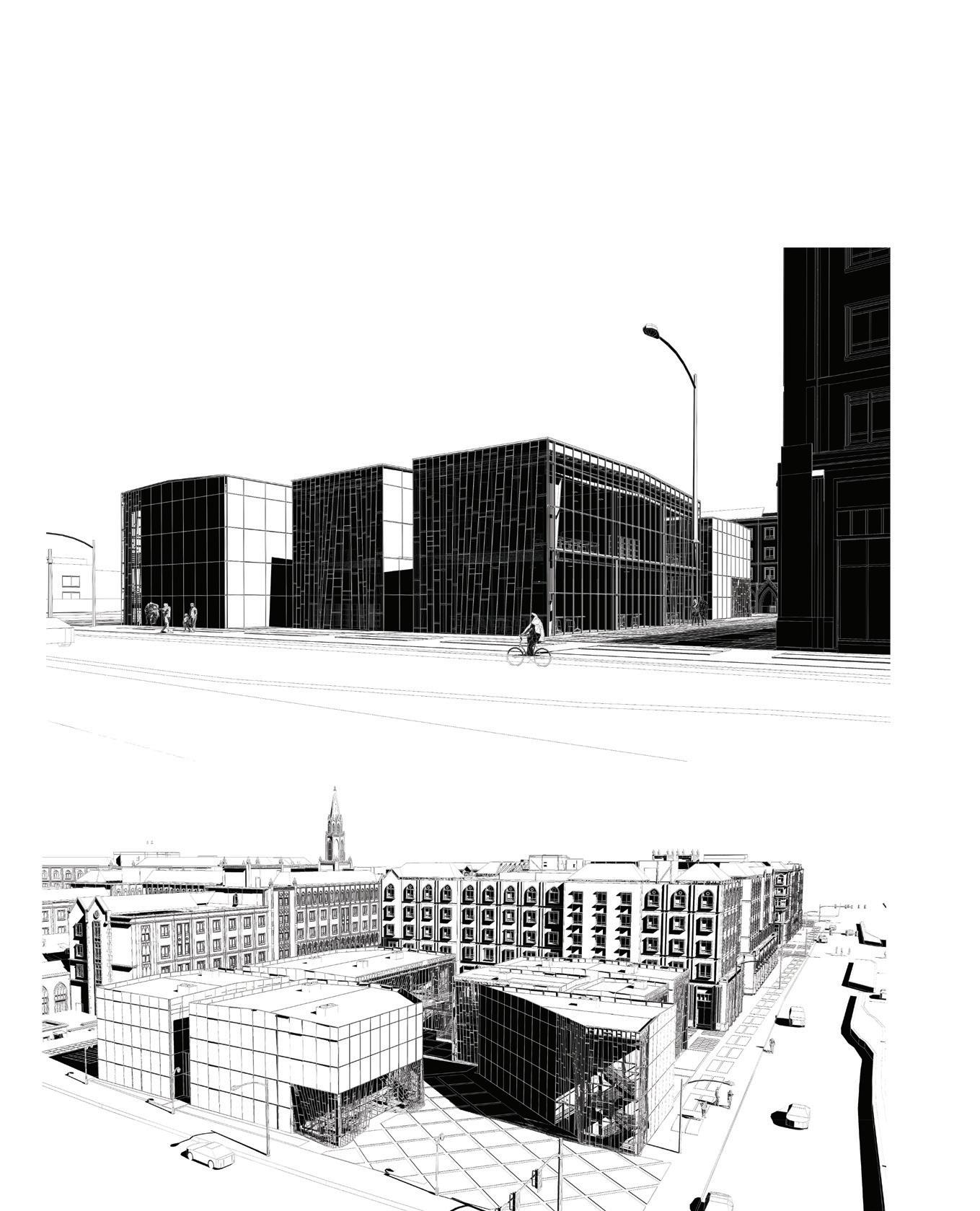
ARCH 605A
GRADUATE ARCHITECTURE DESIGN II – INTEGRATIVE DESIGN STUDIO
102 VIEWBOOK
SETH CALMES
M.ARCH+3 ’23
ARCH 605A
GRADUATE ARCHITECTURE DESIGN II – INTEGRATIVE DESIGN STUDIO
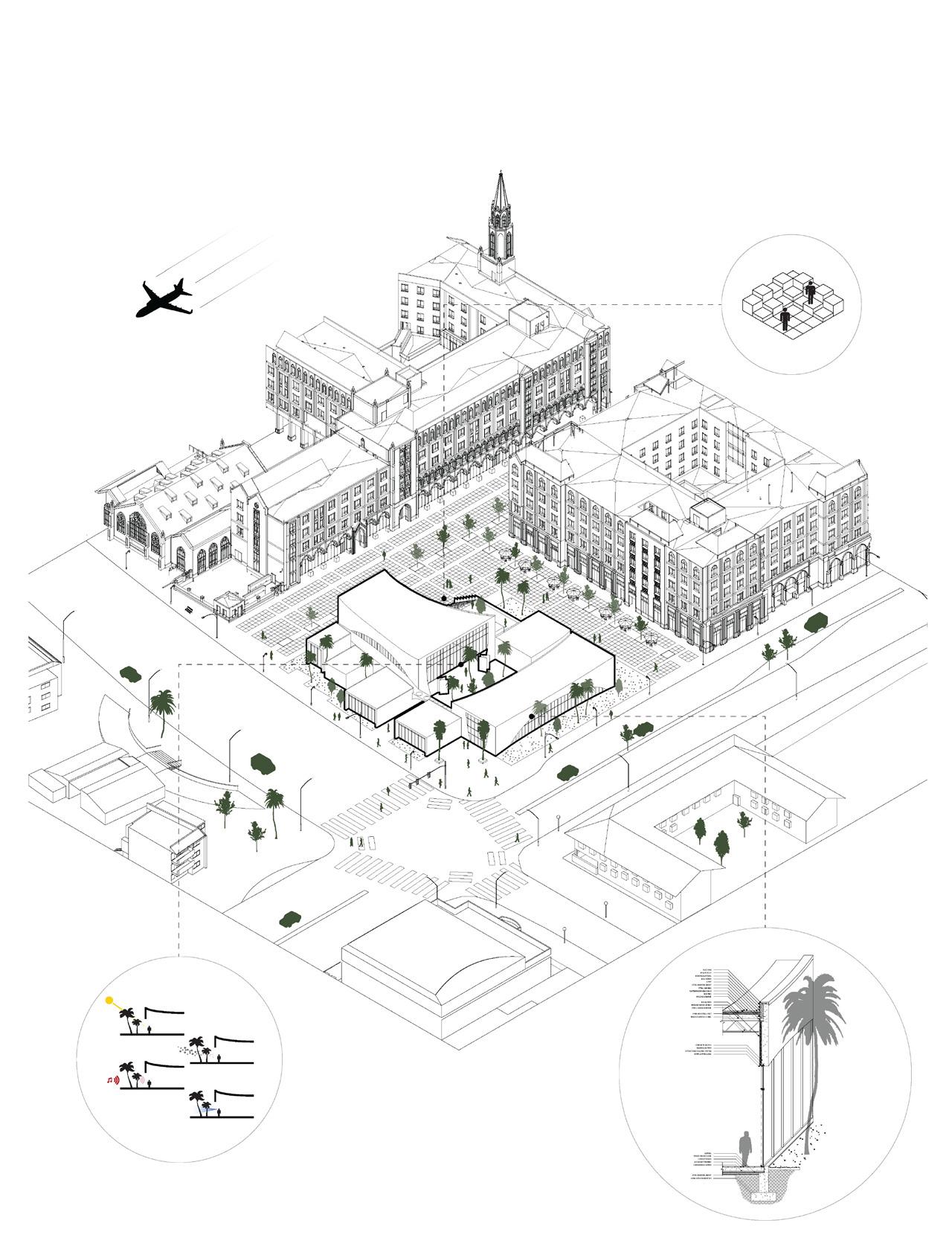
103 USC
ARCHITECTURE
MARIA AMEZQUITA
M.ARCH+3 ’23
ARCH 605A
GRADUATE ARCHITECTURE DESIGN II – INTEGRATIVE DESIGN STUDIO
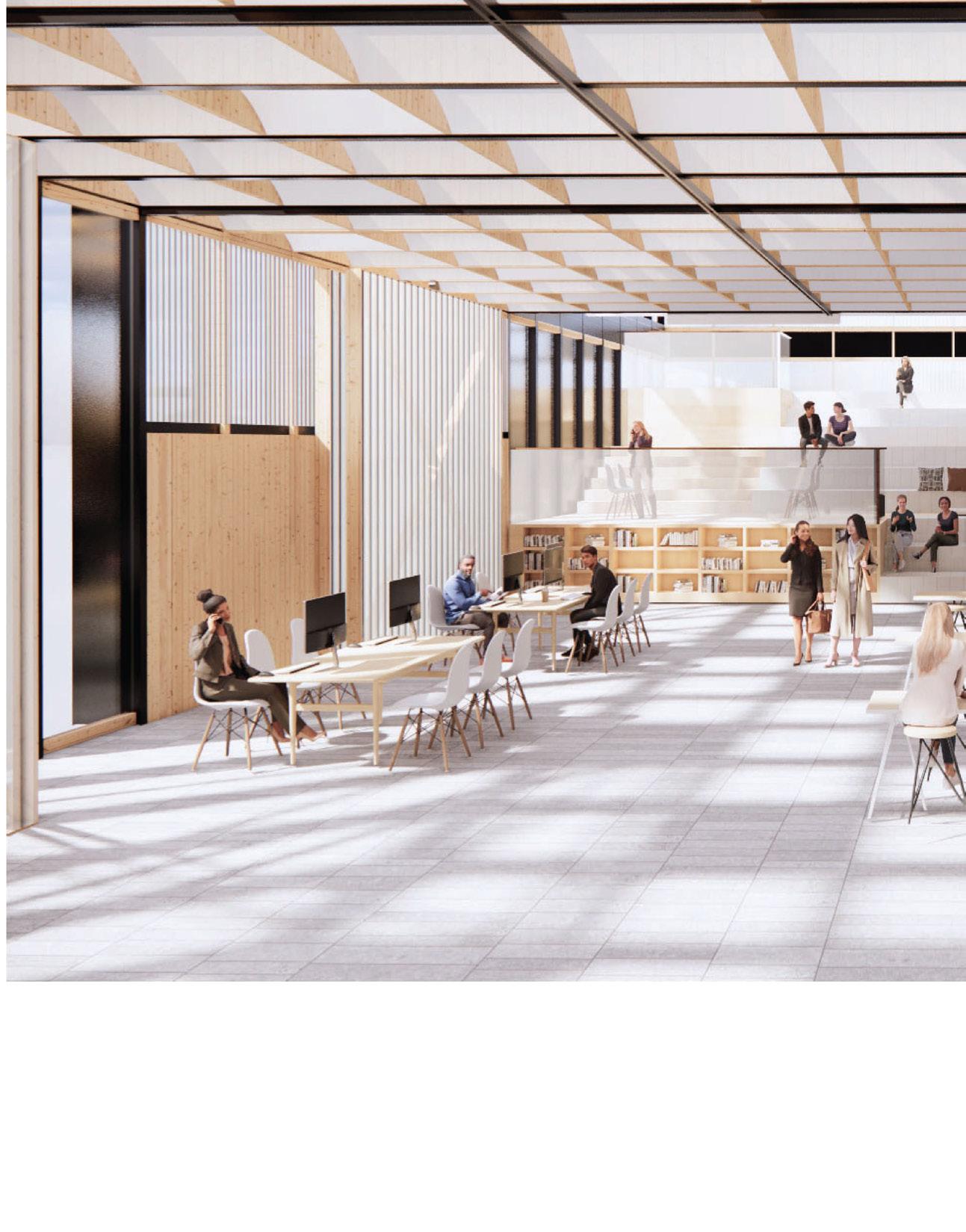
104 VIEWBOOK
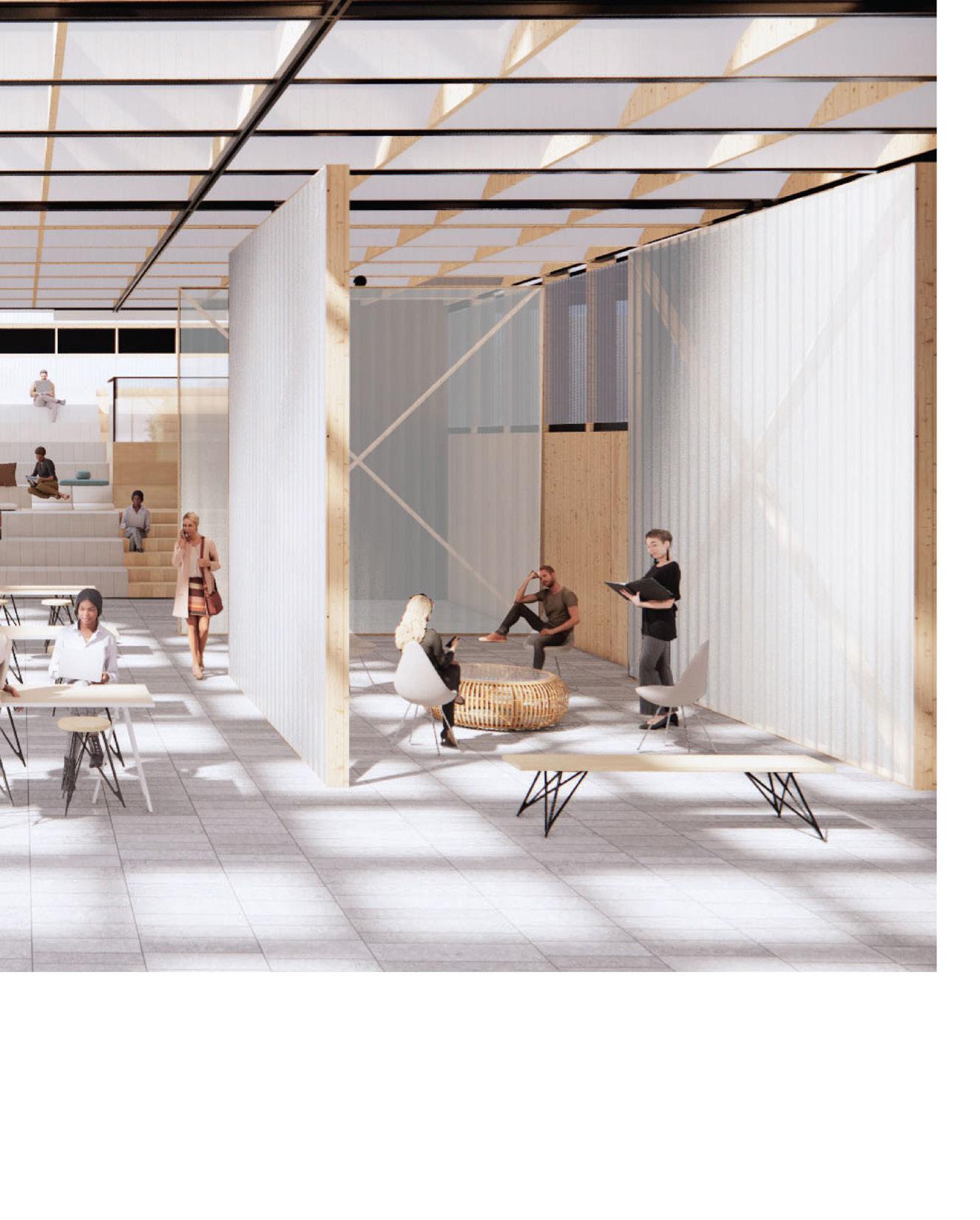
105 USC ARCHITECTURE
JINMENG HAN
M.ARCH+3 ’22
ARCH 793
DIRECTED DESIGN RESEARCH – “CRITICAL COMPUTATION” THESIS STUDIO

106 VIEWBOOK Courtyard Chunk

107 USC ARCHITECTURE
THANK YOU
YUE LIANG
M.ARCH+3 ’22
ARCH 793
DIRECTED DESIGN RESEARCH – “CRITICAL COMPUTATION” THESIS STUDIO
108 VIEWBOOK
109 USC ARCHITECTURE
110 VIEWBOOK Ground Floor -16' - 6" Level 2 -1' - 6" Level 3 13' - 6" Level 4 28' - 6" Level 5 43' - 6" Level 6 58' - 6" Roof 73' - 6" A-301 A B C D E F Classroom 3 18 Community Kitchen 19 Computer Lab 7 Theater 29 Circulation Desk 31 Stacks 5 Kid's Room 32 Study Space 33 Stacks 35 Ground Floor -16' - 6" Level 2 -1' - 6" Level 3 13' - 6" Level 4 28' - 6" Level 5 43' - 6" Level 6 58' - 6" Roof 73' - 6" 1 A-301 1 2 3 4 5 6 7 Classroom 1 36 Classroom 2 37 1'-0" 1 1'-0" 2 MEREDITH JENSEN M.ARCH+3 ’20 ARCH 793B ARCHITECTURE DIRECTED DESIGN RESEARCH 2019–2020
Sections 04/25/22
A-301
Sections
SHAWN MERGLER
M.ARCH+3 ’22
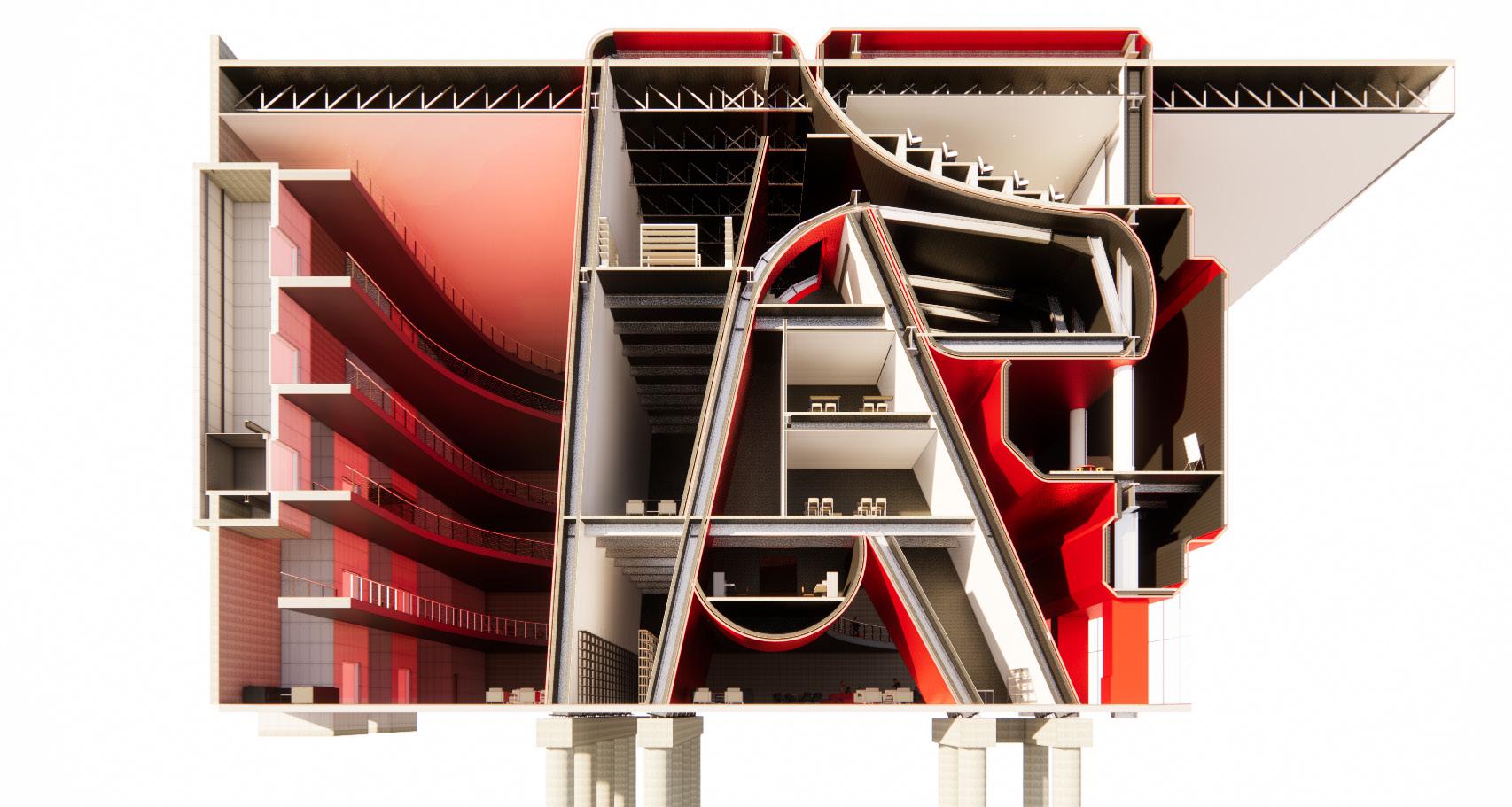
ARCH 793
DIRECTED DESIGN RESEARCH – “THE ETHICS OF AESTHETICS” THESIS STUDIO
111 USC ARCHITECTURE
1/8" = 1'-0"
THE FIGURAL CORE
Section Perspective
LUDUBICA GONZALEZ
M.ARCH+3 ’22 ARCH 793
DIRECTED DESIGN RESEARCH – “THE FORM OF FORMS” THESIS STUDIO
What would happen if we used this similar logic to convert the parking garages/ lots in downtown Los Angeles into spaces that are interchangeable with public spaces and businesses?
The Supershare proposes a multi-layered parking layout that is designed to put activity over parking, literally. Day and night-time activities, like office work and concerts, are strategically selected to occupy parking spaces that would otherwise be left unused. For example, in the morning, from 6am-8am when parking spots for office workers are not fully occupied, the space transforms into recreational activities like yoga or track. Likewise, from 5pm onward, when most office workers have left work, evening activities like dining and concerts consume spaces left unoccupied.
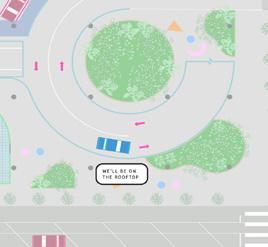

To make the ever-transforming garage accessible to all modes of transportation, the ground floor is designed to be a multi-modal “inand-out zone” where uber drivers or autonomous vehicles can unload their passengers, car drivers can quickly stop for food or coffee, pedestrians can pick up scooters, and people can park. To access the rest of the levels the structure includes a vehicle-passenger elevator and a ramp circulatory system. The ramps and height of each level is determined by the program. For example, floor [x] which exhibits a basketball court results in a ceiling height of 27’ with a spiraling speed ramp that stretches 100’.
The Supershare exemplifies how a super parking structure can be designed to be interchangeable with “livable” space. We live in a car centric city with a love-hate relationship with cars and their infrastructure. This is an issue we’re all aware of and this thesis will hopefully contribute to the growing conversation. As we have seen, this project acknowledges the existing need for parking and densification, but is designed with the intent to surpass the life of parking requirements as we see them today.
112 VIEWBOOK SUPERSHARE AN URBAN PARKING DESIGN PROJECT BY LUDUBICA (LULU) GONZALEZ ramp WH AT FL OOR ARE WE GOING TO A GAIN ? WE’L L BE ON T HE R OOF TO P TO DA Y 15 MIN 20 MIN 25 MIN LEVEL N : 152’-0” LEVEL O 170’-0” LEVEL P : 180’-0” LEVEL Q 194’-0” LEVEL R : 210’-0” LEVEL S : 222’-0” LEVELT : 240’-0” LEVEL U : 254’-0” LEVEL V 264’-0” LEVEL W 274’-0” LEVEL X : 290’-0” LEVEL Y : 302’-0” LEVEL Z 318’-0” The Supershare proposes a multi-layered parking layout that is designed to put activity over parking, literally. Day and night-time activities, like office work and concerts, are strategically selected to occupy parking spaces that would otherwise be left unused. A typical standard parking stall with an area of 200sf could be replaced with four additional office spaces, a dining area for six people, a living space for one person, and so on. This is the idea behind the supershare: a maximized shared parking garage that meets all the parking requirements within a 1000 foot radius, while simultaneously providing space for temporary urban activities. The intent is that at any given time of the day, parking spaces that are left unoccupied programmatically transform to provide other services, from markets to recreational spaces. The data collected for a neighborhood in the jewelry district in downtown Los Angeles, revealed that over 25 parking lots and garages exist within a 1000 foot radius.This translates into a 26-floor super-parking garage, with a mixed-use podium to further encourage densification. In other words, the Supershare replaces 25+ parking lots and garages with the footprint of just 1. A shared parking map was conducted and revealed that during certain times of the
parking spaces that meet the current need for parking while simultaneously
space for community activity. Projects and ideas like Blackbirds, by Bestor Architecture, and the Dutch woonerf are
of how “car space” can be designed to
with “human spaces”, and how parking
into community spaces by
strategies and materials to alter how we
deal with parking requirements.
day, [x] amount of spaces are left unoccupied during the week and weekends. Using this data, and the prescribed parking standards, we can begin to quantify
providing
examples
coexist
can transform
using design
customarily
ramped parking egress PARKING TYPOLOGIES: DOWNTOWN LA

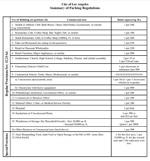
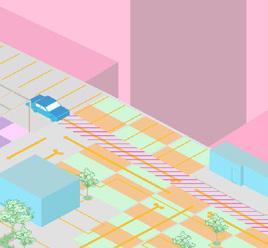
113 USC ARCHITECTURE DINER DINING + BAR SHOP THEATER NIGHTCLUB FAST FOOD WEEKDAYS SHARED PARKING REQUIREMENTS SHARED PARKING REQUIREMENTS DINING + BAR SHOP THEATER NIGHTCLUB FAST FOOD WEEKENDS SHARED PARKING REQUIREMENTS SHARED PARKING REQUIREMENTS FOOD TRUCK GALLERY 3 3 2 2 2 2 PARKING GYM COMMUNALSPACE PARKINGSPACE SHARED DRIVEWAY PRIVATEFRONTYARD THE FORMS SHARED PARKING ANALYSIS PRIVATE FRONTYARD FLEXIBLE COMMUNAL SPACE SHARED PARKING SPACES VARIED CONCRETE PAVEMENT PEDESTRIAN WALKWAY EGRESS EGRESS TANDEM PARKING STALLS EGRESS EGRESS PERMANENT PARKING FURNITURE: CUBE SEATING WALKING COURSE SHADED DESIGNATED EATING AREA PICKLEBALL COURTS standard parking stall alley BLACKBIRDS, BESTOR ARCHITECTURE FLOOR PLANS
NINA WEITHORN
MLA+3 ’24
ARCH 541A LANDSCAPE ARCHITECTURE DESIGN TRANSLATION & DIALECTICS STUDIO
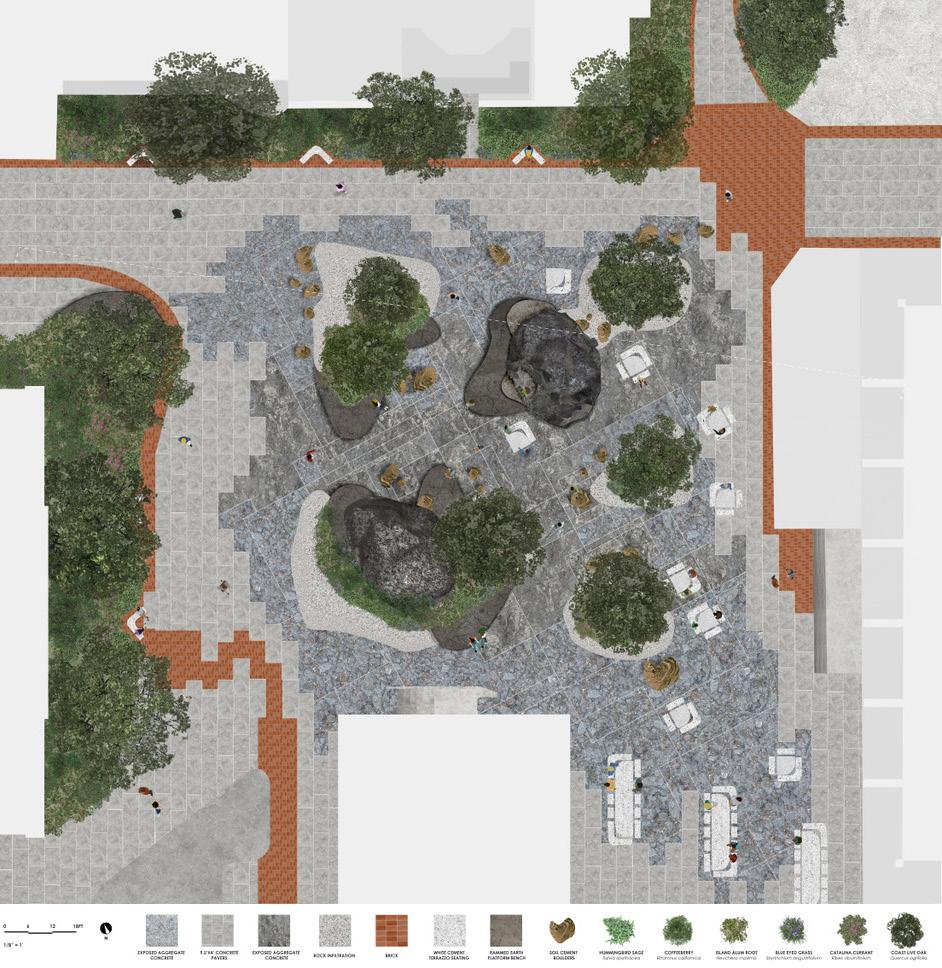
114 VIEWBOOK
PAUL KIM
MLA+3 ’24
ARCH 541B LANDSCAPE ARCHITECTURE DESIGN
MACARTHUR PARK AND THE URBANISM OF LA STUDIO
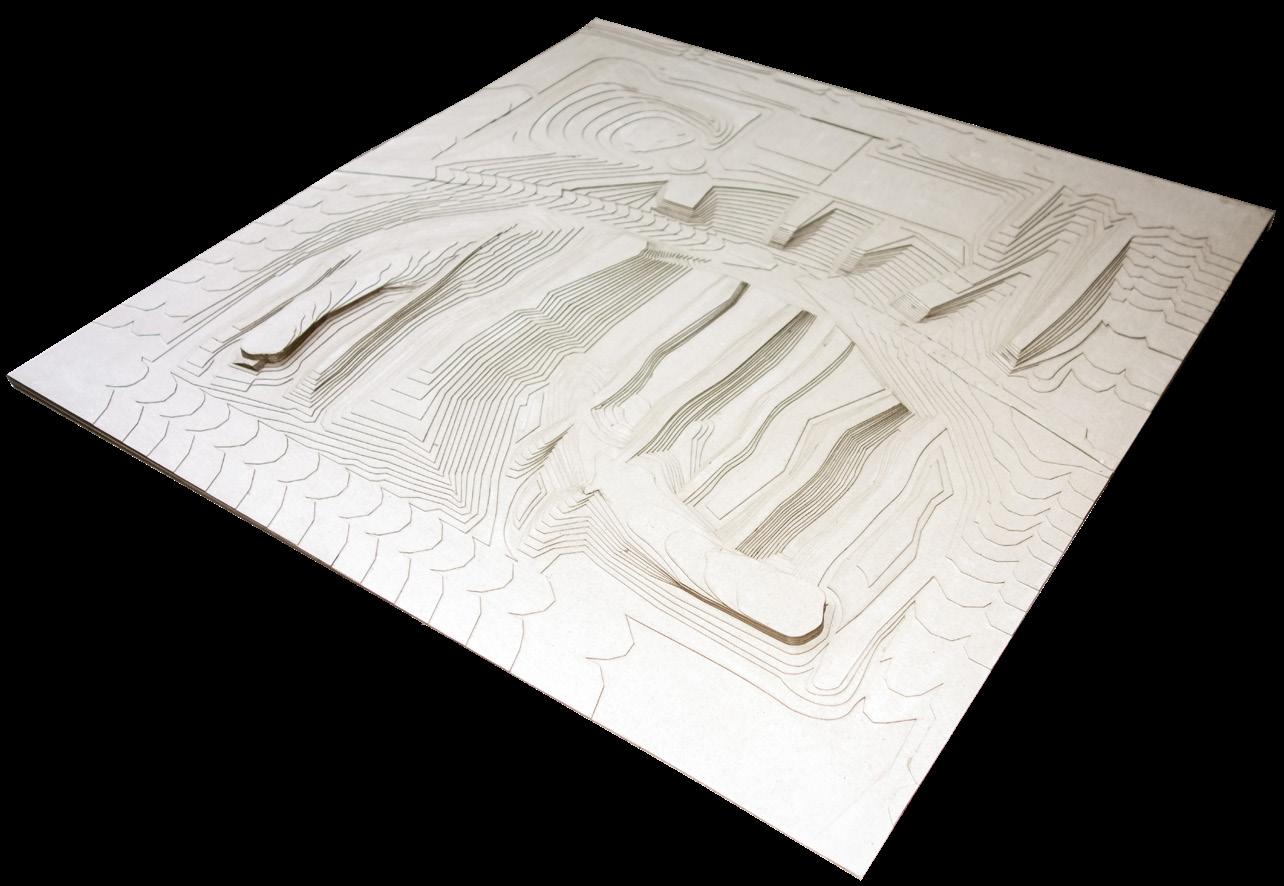
115 USC ARCHITECTURE

116 VIEWBOOK
LESLIE DINKIN
MLA+3 / MHC
ARCH 542A LANDSCAPE ARCHITECTURE DESIGN
URBANISM AS AN ESTUARY STUDIO
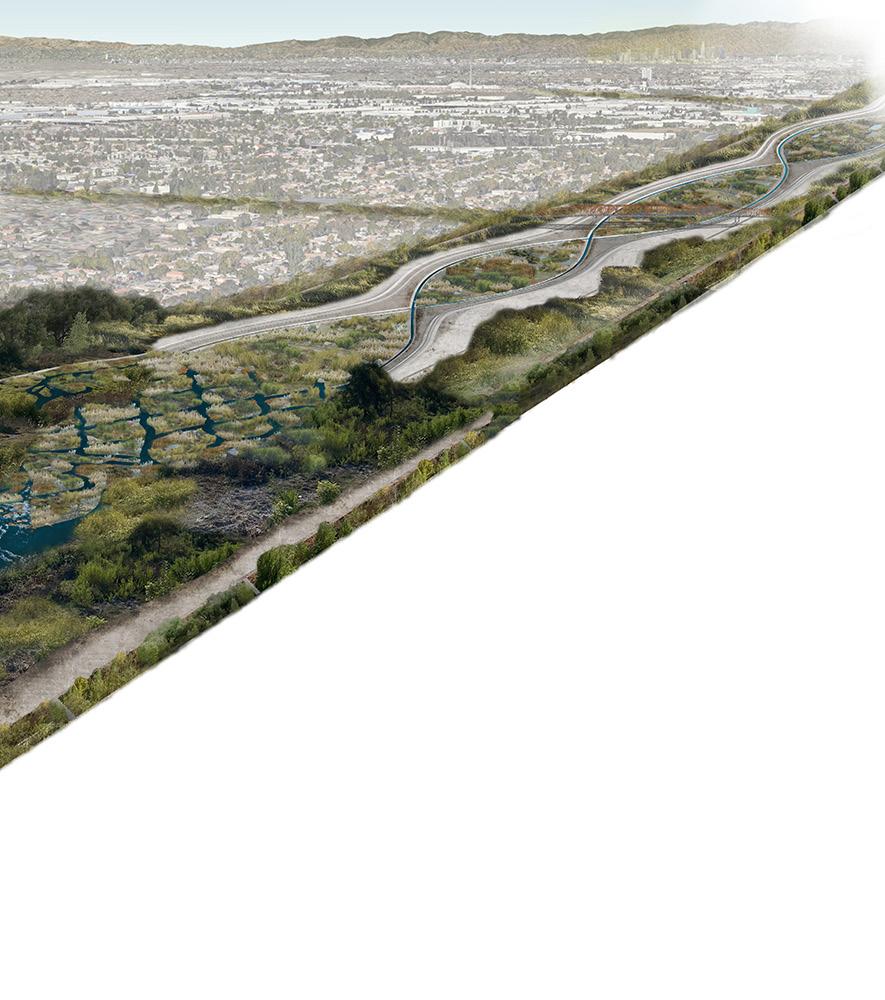
117 USC ARCHITECTURE
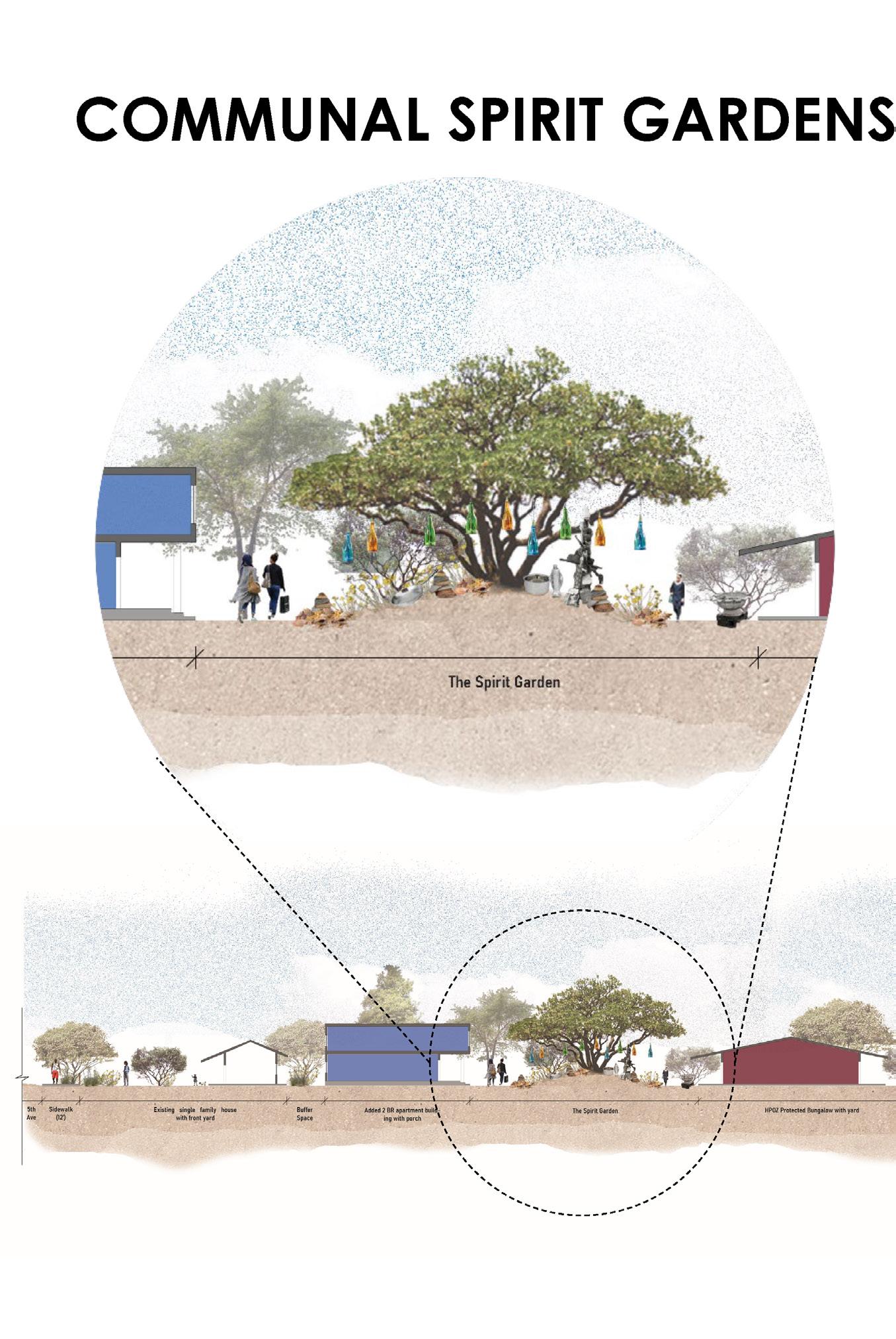
118 VIEWBOOK
NEHALI DOSHI
MLA+3 ‘22
ARCH 642 LANDSCAPE ARCHITECTURE DESIGN
OAKWOOD EQUITY INTEGRATED STUDIO
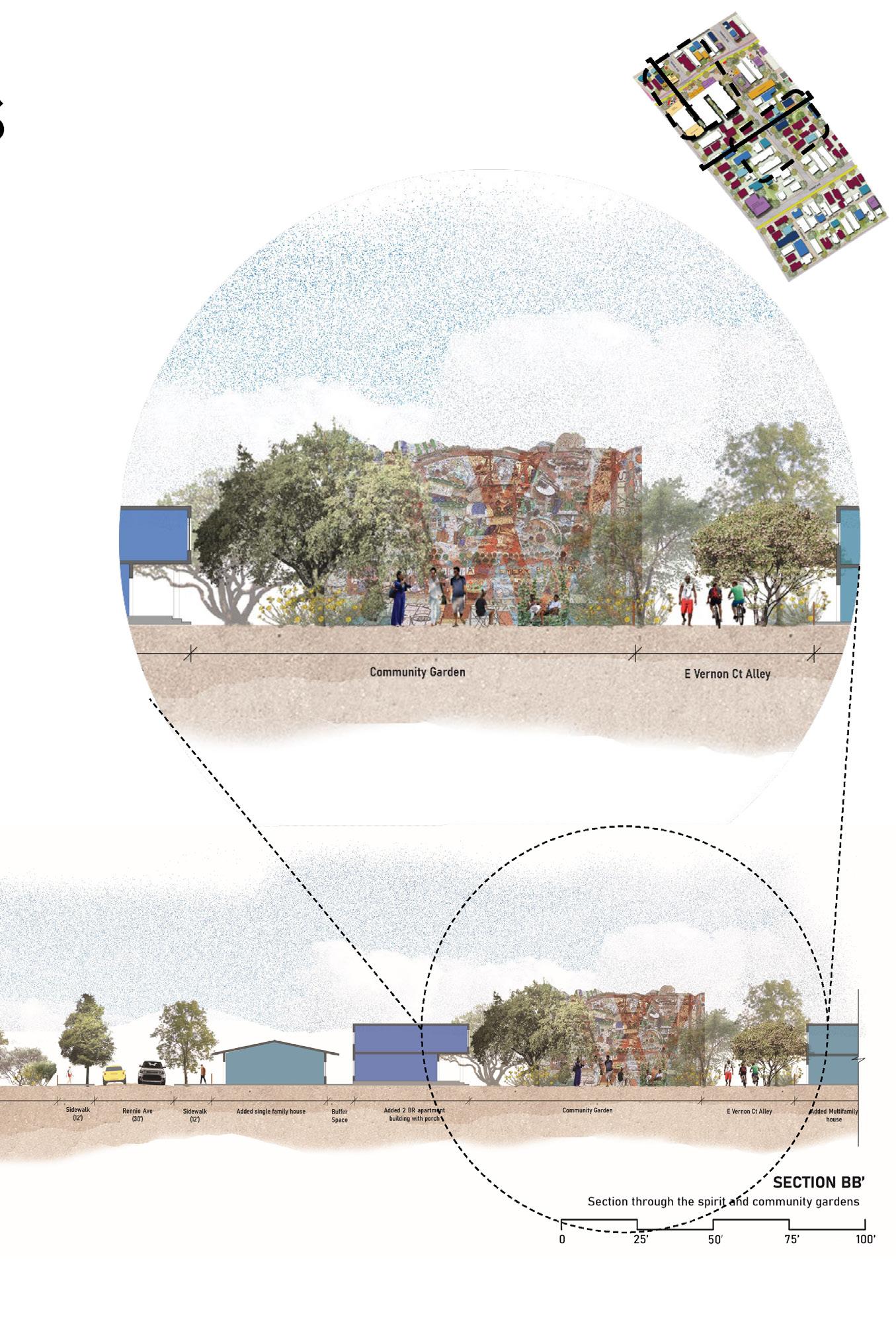
119 USC ARCHITECTURE
ZEHRA RIZVI & GABRIELLE CASTRIOTTA
MLA+2 ’22
MLA+3 ’22
ARCH 698B LANDSCAPE ARCHITECTURE DESIGN
THE WILD STUDIO

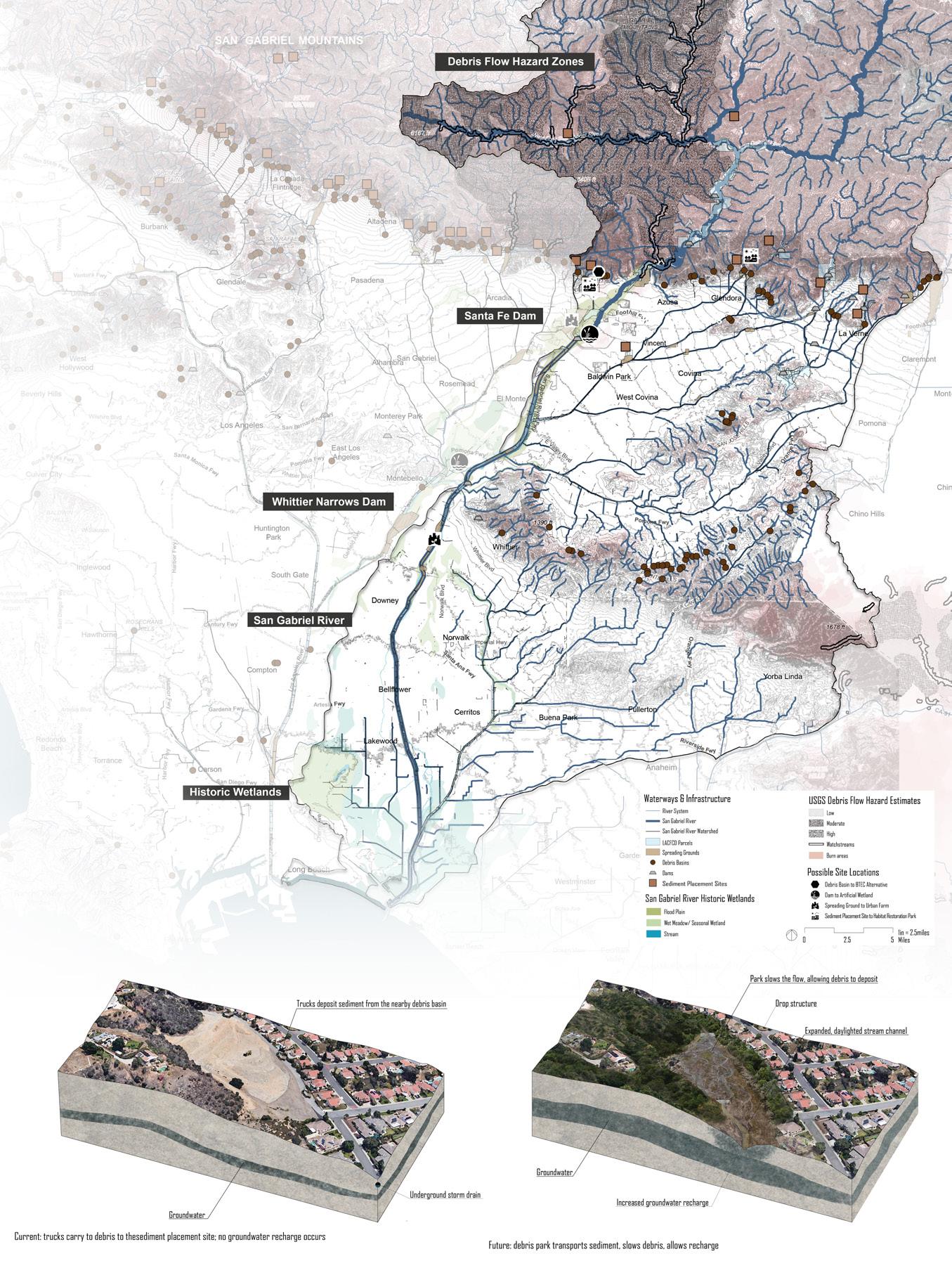
121 USC ARCHITECTURE
GRADUATE ADMISSIONS
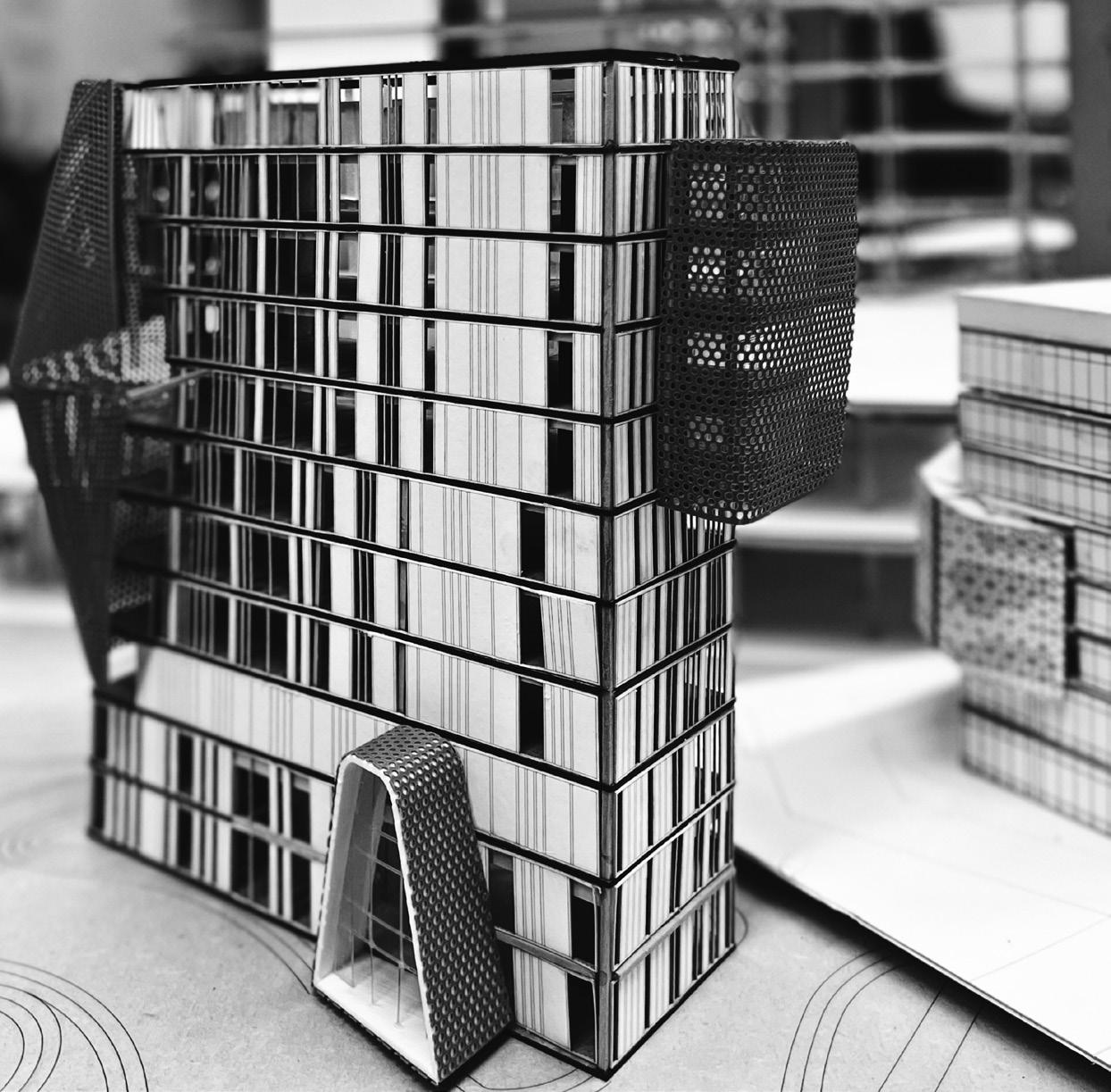
THE GRADUATE PROGRAMS AT THE USC SCHOOL OF ARCHITECTURE HELP NURTURE THE INVENTIVE IMAGINATIONS OF CREATIVE THINKERS AND INSPIRE IMMERSIVE ENGAGEMENT IN A COMPLETE DESIGN DIALOGUE.
123 USC ARCHITECTURE
ARCH
LEFT BELLE ZHONG M.ARCH+3
605B
Our graduate programs promote the aggressive exchange of ideas and encourage the proactive participation in the processes of design, building technology and conservation on both the neighborhood scale and global stage.
Through our graduate programs, you’ll develop real-world problem-solving skills and join a group of ambitious scholars, innovators and leaders who want to make a difference in their home communities and beyond.
Graduate students may choose from our five master’s degrees, three dual degrees and five certificate programs to best pursue their individual interests and goals. Our degree curriculum—whether in architecture, landscape architecture, building science or heritage conservation, has always been intensive, in-depth and topical—with each program fusing history, theory, technology and design into a variety of degree programs that well-prepare our students for the rigors of professional design practice.
124 VIEWBOOK
USC Graduate Online Application (USC CAS)
Official Transcript(s)
Resume and/or Curriculum Vitae
Statement of Intent
Three (3) Letters of Recommendation
Portfolio
NOT REQUIRED for Master of Heritage Conservation.
OPTIONAL for Master of Building Science, Graduate Certificates in: Architecture, Building Science, Landscape Architecture, Sustainable Design, and Heritage Conservation.
Writing Sample
NOT REQUIRED for Master of Advanced Architectural Studies, Master of Architecture, Master of Building Science, and Master of Landscape Architecture.
OPTIONAL for Graduate Certificates in: Architecture, Building Science, Landscape Architecture, and Sustainable Design.
INTERNATIONAL APPLICANTS MUST ALSO SUBMIT:
Financial Statement of Personal or Family Support, TOEFL or IELTS scores, and copy of passport
Details about the above requirements, application deadlines, and FAQs may be found at:
ARCH.USC.EDU/GRADUATE-ADMISSIONS
125 USC ARCHITECTURE
PRE-COLLEGE PROGRAMS
USC SUMMER PROGRAM: EXPLORATION OF ARCHITECTURE
Exploration of Architecture offers two concurrent programs that introduce high school students to the fundamentals of architectural education. Students can choose from a dynamic, remote two-week experience or an immersive, in-person and on-campus four-week experience. In both programs, students will design and build in a collaborative studio environment while working directly with the School’s distinguished faculty and upper division students. The four-week program offers three units of college credit.
These programs will enable students to make informed decisions about future academic and professional choices. In addition, they will attend lectures and engage in conversations with leading local, national, and international architects. Students will meet and make friends with other participants from around the world with similar interests. These programs provide excellent opportunities to refine problem-solving skills and deal with abstract concepts.
126 VIEWBOOK

STUDENT ORGANIZATIONS
ALPHA RHO CHI (APX)
APX is a nationwide professional and social co-ed fraternity for students of architecture and the allied arts. APX has over 30 chapters across the country, meaning a nationwide network of active members and alumni that continues beyond graduation. Andronicus is the Alpha Rho Chi chapter at USC and is one of the oldest student organizations on campus. APX organizes many events to strengthen the relationship between students, faculty and the School of Architecture.
AMERICAN INSTITUTE OF ARCHITECTURE STUDENTS (AIAS)
The mission of the AIAS is to promote excellence in architecture education, training, and practice; foster an appreciation of architecture and related disciplines; enrich communities in a spirit of collaboration; and encourage students to advance the art and science of architecture. AIAS creates a forum of students to interact outside of studio. The USC Chapter of AIAS gives students the opportunities to network with the professional world and contribute to the Los Angeles community.
AMERICAN
SOCIETY OF LANDSCAPE ARCHITECTS (ASLA)
USC ASLA is the USC student chapter of the American Society of Landscape Architects. The organization hosts a series of workshops and professional networking events throughout the year and encourages collaboration across disciplines. The student leaders are dedicated to fostering communication and advancing student development and opportunities within the School of Architecture and reaching our networks across the greater Los Angeles region.
128 VIEWBOOK
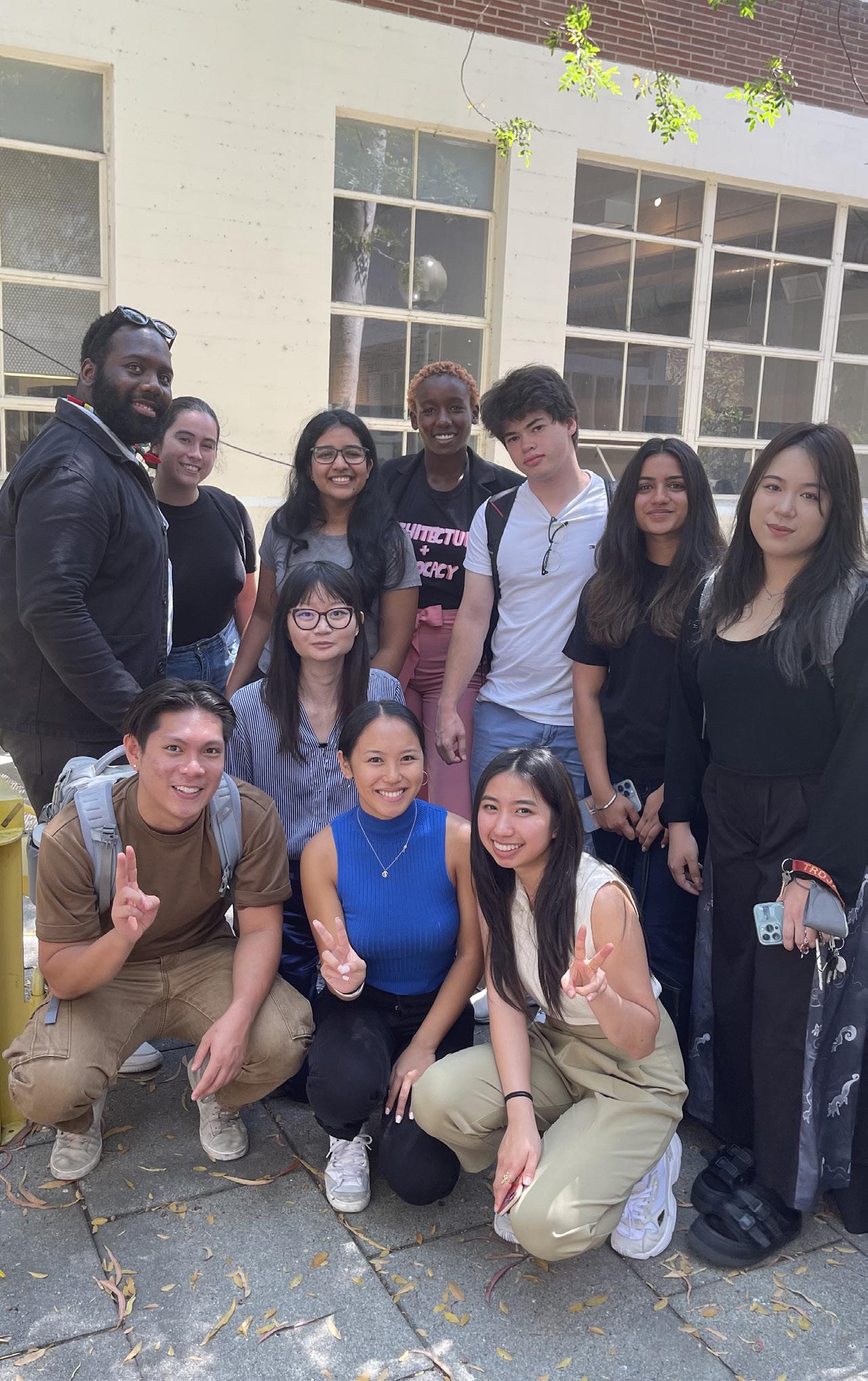
GRADUATE ARCHITECTURE STUDENT ASSOCIATION (GASA)
GASA is comprised and representative of the USC School of Architecture graduate student body. The organization explores and promotes academic and career issues related to the field of architecture. It represents the concerns and needs of the graduate student body by providing interdisciplinary exchanges and insight of special interests to students. GASA works to help create memories and connections by working to improve all aspects of the graduate student experience.
THE NATIONAL ORGANIZATION OF MINORITY ARCHITECTURE STUDENTS (NOMAS)
The NOMAS Chapter at the University of Southern California strives to enhance the USC Architecture community by promoting the cultural backgrounds and experiences of our minority students. Events and activities hosted by NOMAS benefit all students and faculty members as well as the greater community.
STUDENT ASSOCIATION OF WOMEN ARCHITECTS (SAWA-USC)
SAWA-USC is dedicated to the advancement and support of women in the field of architecture. It encourages and fosters high levels of women’s achievement in design through conversation, networking, mentorship, scholarship, and more. SAWA-USC cultivates awareness of the value of equality in the workplace and fosters an empowering environment for women, providing students the opportunity to learn from women faculty, alumni, and professionals in architecture.
130 VIEWBOOK
UNDERGRADUATE ARCHITECTURE STUDENT COUNCIL (UASC)
UASC is comprised of the official elected representatives of the entire undergraduate population at the USC School of Architecture. The executive board represents the undergraduate student body and acts as a bridge between students and the School. The objective of the board is to enhance the academic and social experience of students on and off campus and fosters inter-grade relationships through the opportunity to learn from women faculty, alumni, and professionals in architecture.
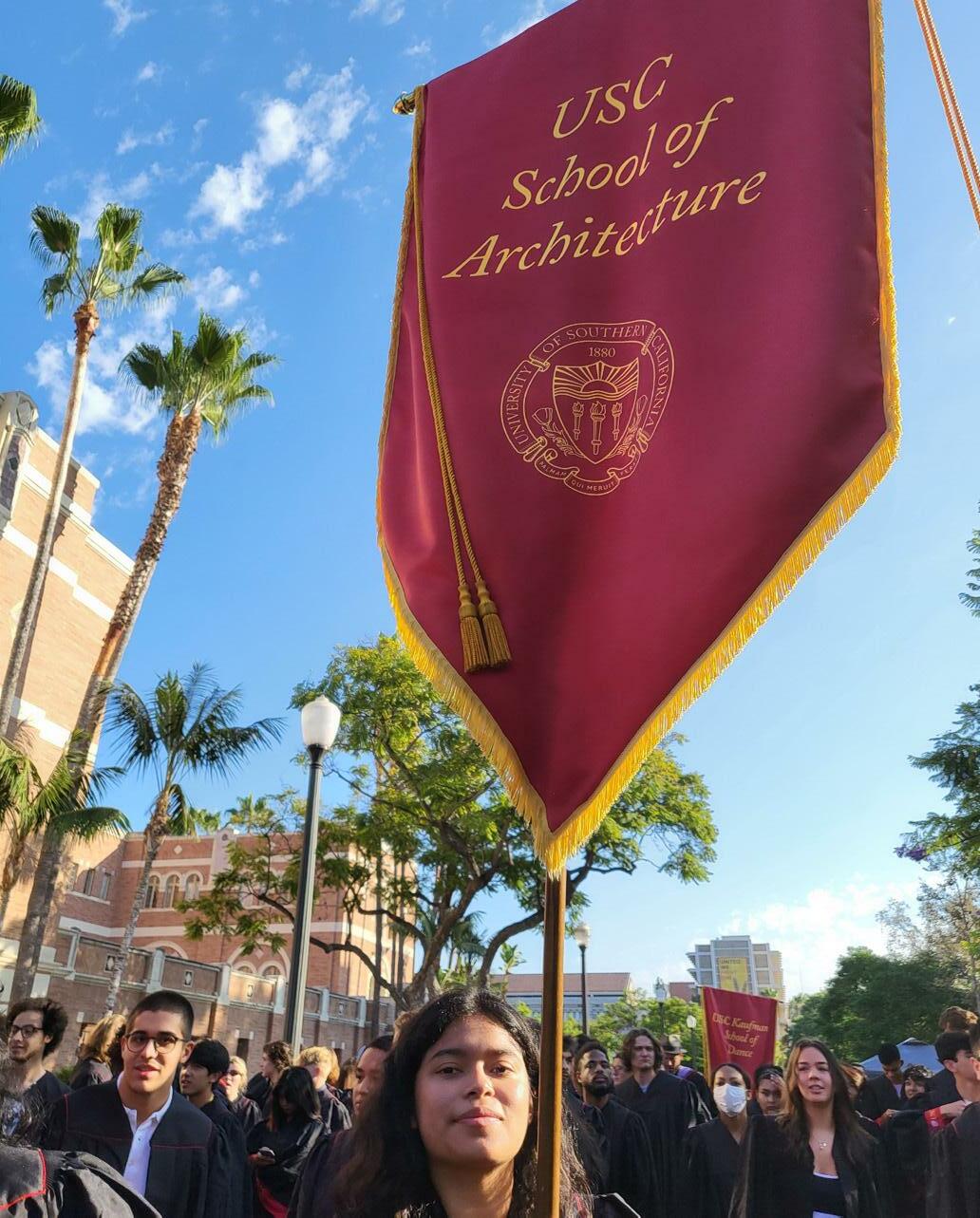
131 USC ARCHITECTURE
RESEARCH AT USC ARCHITECTURE
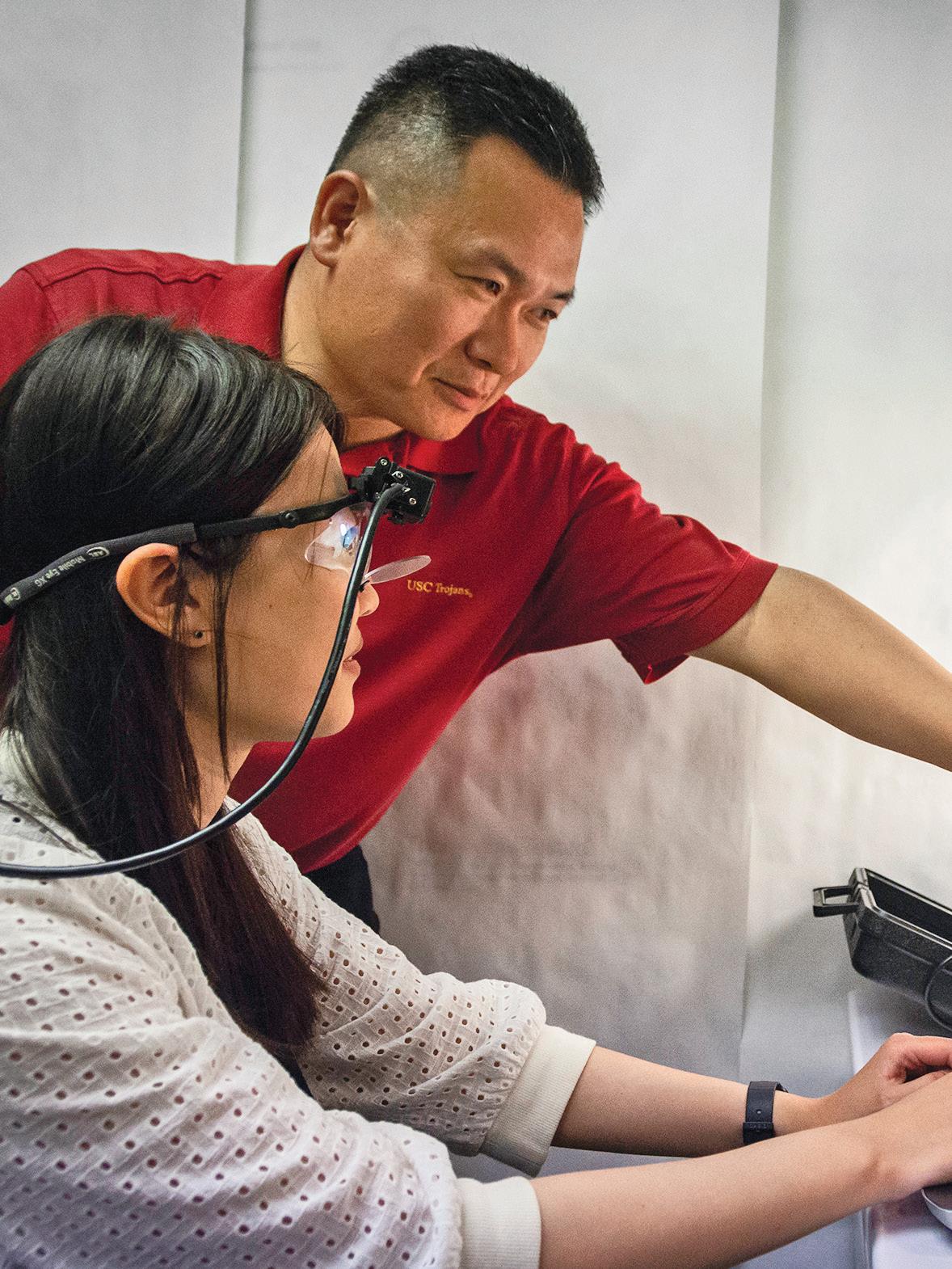
From a foundation of rigorous research and inspired design, USC architects and scholars move fluidly from theory into practice. Embedded in one of the nation’s most respected research universities, the School of Architecture nurtures an environment in which students and faculty collaborate across disciplines. By engaging the praxis of architecture in conversation with peers in the arts, humanities, STEM, and other disciplines, USC Architecture sparks connections that reveal new and previously unimagined solutions.
Now in its 100th year, USC Architecture is emerging with new initiatives focused on research and creative work in building technologies, landscape and ecology, sustainability, urbanism, and housing. The School utilizes its local resources and partnerships in the University and in the regional community of Southern California while continuing to expand its research and academic footprint regionally and globally. Students are encouraged to engage in cutting-edge, professional research with faculty advisors in their course of studies to seek solutions for today’s pressing issues.
133 USC ARCHITECTURE

















































































